HQ Newsletter
Get all latest content delivered to your email a few times a month.
Hello!
And welcome to our first HQ edition of 2025! We hope you have all had a fabulous festive season with your family and friends, especially those of the four-legged variety.
This edition sees us catch up with the young riders who travelled abroad last year to represent their country in showjumping. We hope you enjoy reading their interviews and hearing about their overseas experience; we certainly took a lot away from hearing what they had to say.
We also have the start of several series’ that will see us meet the officials of our sport, examine rider fitness, discuss welfare, and dive into the research on coaching. Our team has a lot planned for 2025, and some big changes are coming, so stay tuned.
For now, we hope you enjoy the final few days of your holidays. We look forward to seeing you back here next month.
Happy New Year!
Dr Lizzie Harrison | Editor
Cover photography | Ash K Photography
Designer | Mauray Wolff
2024 FEI Jumping Challenge Bronze Medallist
Winner of the Sportsmanship Award at the 2024 FEI Children’s Classic Final
FEI Jumping World Challenge competitor
Eighth place at the 2024 FEI Children’s Classic Final
Qualification conundrum
Part 1
Part 1
Resolving to raise awareness
Your questions answered

PHOTOGRAPHY: MERLYNN TRICHARDT
Victoria Greyvensteyn and Divan Bosman qualified to compete in the FEI Jumping World Challenge Final 2024 in Tashkent, Uzbekistan. Victoria achieved an exceptional third place and the FEI Bronze Medallist title in the 2024 FEI Jumping Challenge. SA Showjumping caught up with Victoria to get to know her a little better and find out more about her experience at the Final.
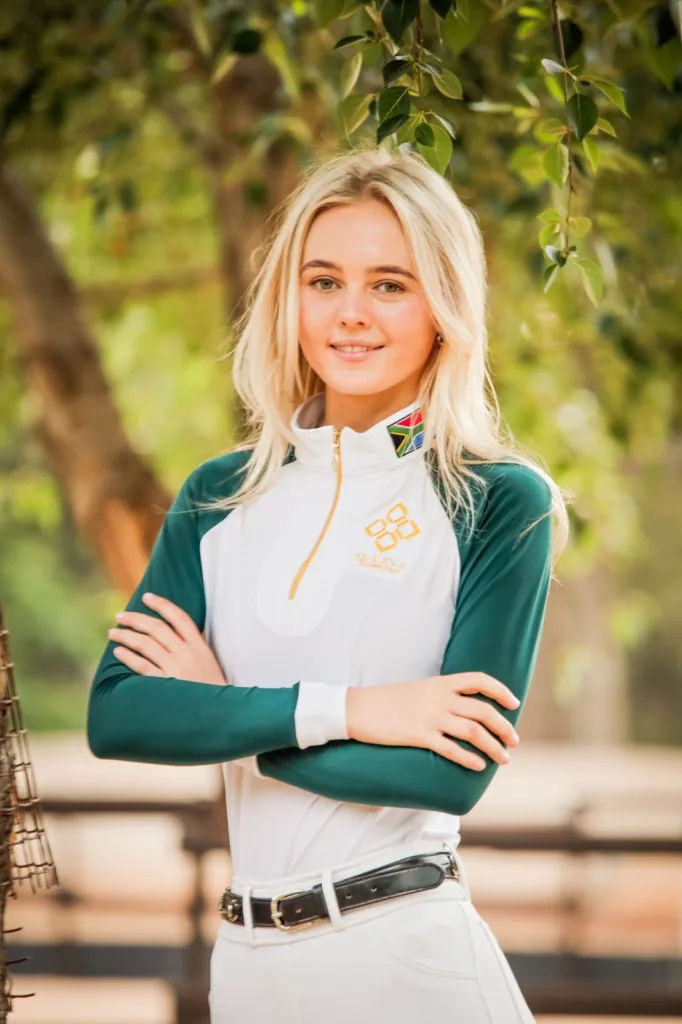
Q: Tell us a little about yourself!
V: I am Victoria Greyvensteyn and am 17 years old. I live in Benoni. I started riding at the age of four and have been gradually working my way up the grades. My first pony was a little piebald called Splat Attack. I now compete with my Thoroughbred mare, Sunny Park Classic Queen. My mom has loved and ridden horses her whole life, which is how I got started.
Q: Tell us about your horses.
V: I have one horse, Queen. She is super quirky and keen. Queen is the type of horse to spook at fillers or things on the side of the arena, but she has the heart of a lion and will jump absolutely anything for me. She and I have an incredible bond, and she will stay with me forever.

Q: What have been your biggest achievements?
V: Earlier this year, I won the open Junior Outdoor Grand Prix and recently placed third in the FEI World Jumping Final, which will always be one of my greatest achievements. I have also had quite a few podium finishes along the way.
Q: How do you balance your equestrian training and competition with other aspects of your life?
V: I wake up before school and ride so I have more time in the afternoons for schoolwork. I also have to make some sacrifices – like I didn’t go away in September this year with my family; I chose to stay home and ride as many horses as possible before the competition. It is very difficult to manage both school and riding, but I push through.

Q: How do you handle the stress and pressure during competitions?
V: I don’t usually get nervous before I compete, but I was extremely nervous on the last day of the FEI World Jumping Final. The pressure did crack me a little bit, but I put my game face on and finished it off on a high. One thing I always do before a round is take a DEEP breath and tell myself, ‘You’ve got this!’
Q: Describe a challenging situation in your equestrian career and how you overcame it.
V: I had a very tricky pony when I was younger. It took me a while to figure him out, but as soon as I did, we were unstoppable. Queen is definitely not the easiest horse either; she does have her moments, and I have just learnt that it’s Queen’s way or the highway - there must be mutual respect between horse and rider. She has a list of mare ‘rules’ that must be obeyed or show days can turn into disasters. I have learnt what makes her ‘tick’, and in return, she’s given me the world.

Q: What motivates you to keep riding?
V: I love schooling horses and seeing them progress. It keeps me motivated every day. There is truly nothing more rewarding than accomplishing something you’ve worked hard for.
Q: What do you consider to be your greatest strength as an athlete?
V: I am a very focused rider, and I am disciplined both on and off my horse. My hard work makes me believe in myself, which I believe is the most important ingredient to accomplishing anything.
Q: What are your long-term goals?
V: I am so confused about what I want to study after school; I am still trying to decide
Q: How do you handle your athletic responsibilities with other sports and recreational activities?
V: I prioritise my riding over other sports or recreational activities. I say no to many nights out, but in the end, it pays off. Right now, I’m focused on being my best.
Q: What is the most important advice your coach has given you?
V: Nicola Sime-Riley has taught me never to underestimate myself and has given me so much confidence. Sue Mesa (my flatwork coach) has taught me patience with my horses and the importance of a balanced horse.
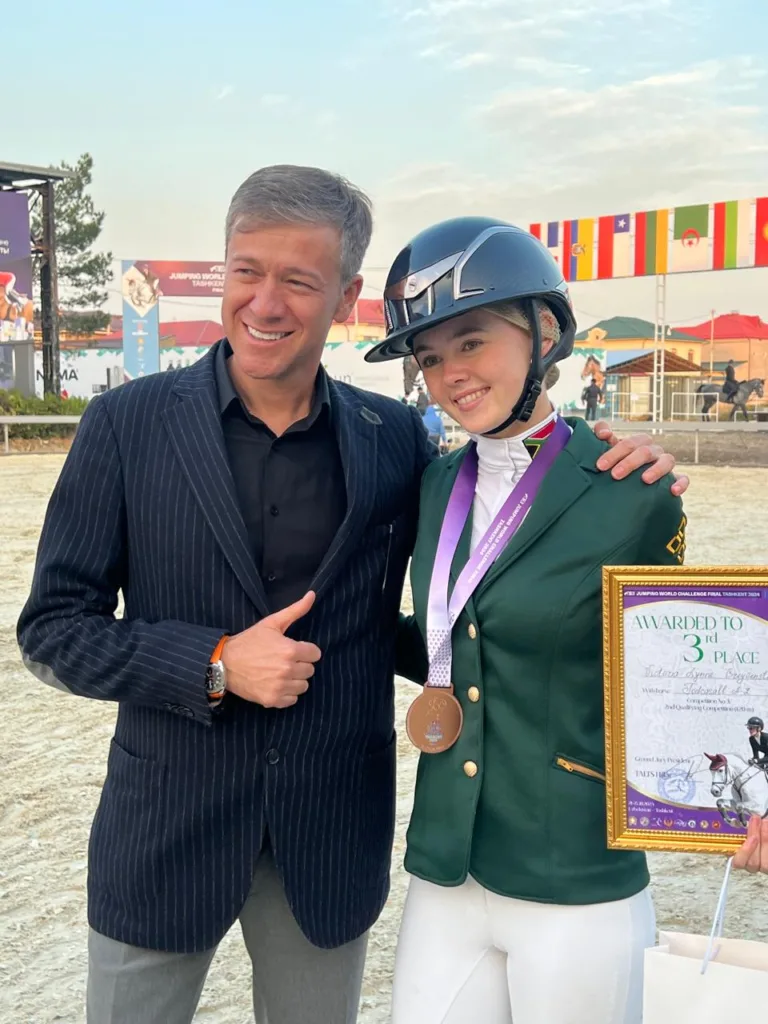
And now, onto your exceptional FEI World Jumping Final performance:
Q: How did you prepare to compete at the 2024 FEI Jumping World Challenge Final?
V: Nicola (Sime-Riley) prepared me well for the final. I rode any horse I was given or allowed to ride. There were some days when I felt I was in too deep, and that pressure helped me when I was overseas. I had to learn to cope.
Q: What was the most important advice your coach gave you before the 2024 FEI Jumping World Challenge Final?
V: You are not there to school the horse. The time available is too short. You need to feel what their likes and dislikes are, adapt to the horse, and reach a happy medium as soon as you can.
Q: What was your first impression on arriving at the 2024 FEI Jumping World Challenge Final?
V: We were greeted with a warm welcome as soon as we landed. The show venue was beautiful and was beautifully decorated for the show. We never went without food and tried traditional dishes, which were delicious.
Q: How did you handle competing in such a big competition on a borrowed horse?
V: My horse, Jodcassal A-Z, was fantastic; he and I worked well together. He was a very different ride to my Thoroughbred, Queen, but I prepared myself well for the competition and figured out what type of ride he was. I just had to adapt quickly.

Q: Tell us a bit about him.
V: Jodcassal A-Z didn’t have the quickest ground speed, but he could turn tight and cut corners where needed. He had a sweet nature, and I definitely miss him.
Q: When competing as an individual in a competition like this, were you able to support your fellow SA rider?
V: I constantly wished my teammate, Divan, good luck and congratulated him after every round. It is a stressful environment, and I think it’s important to always be there for your teammates. We all had a great time together.
Q: What were your fellow competitors like? Did you make any great connections/friendships?
V: I made so many friends. I am still in touch with them and have made so many memories. Everyone was so kind, friendly and welcoming. Although we were competing against each other, we always wished each other well and cheered from the side of the arena.
Q: What was the most challenging part of the 2024 FEI Jumping Challenge Final competition?
V: The language barrier was huge, but in the end, Google Translate got us out of a few situations.
Q: What were your personal goals for the 2024 FEI Jumping World Challenge Final, and do you think you achieved them?
V: I went to Uzbekistan with the intention of having fun and making memories that will last forever. My medals were just the cherry on top.
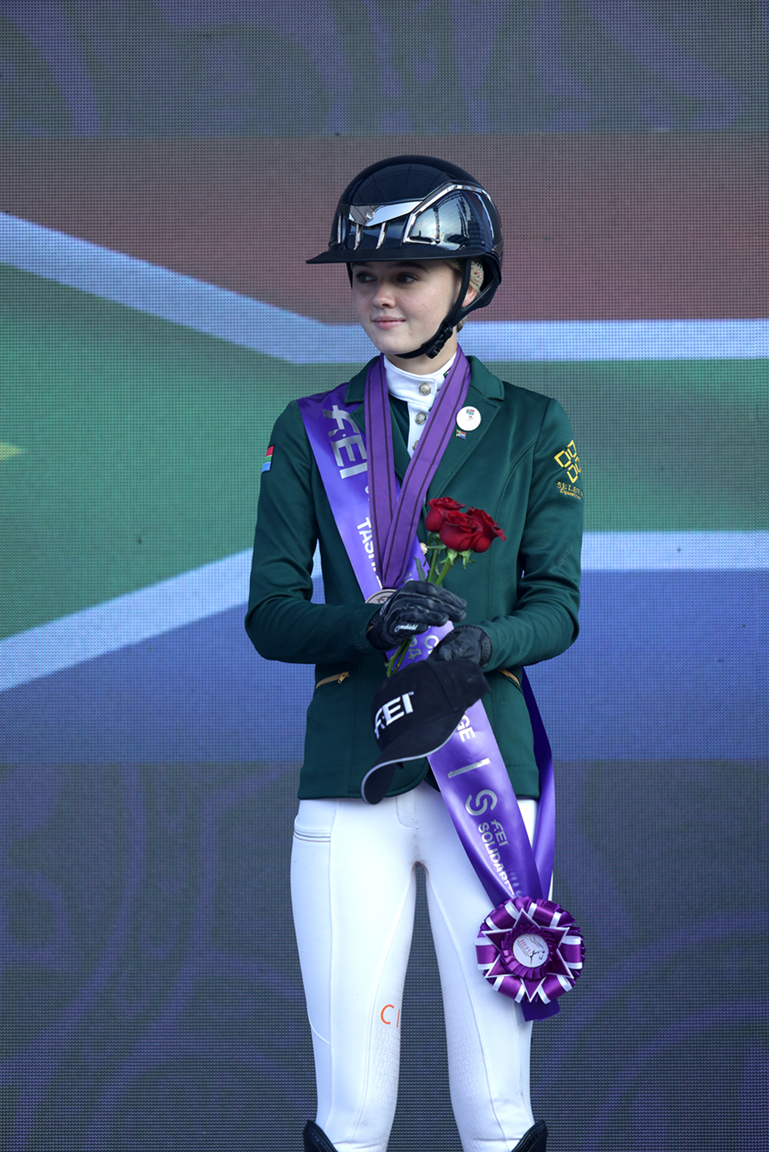
Q: Do you have one lesson/experience from the 2024 FEI Jumping World Challenge Final to carry forward in your career?
V: This experience has taught me to enjoy every moment, and going forward, I will take a step back and cherish every moment in the saddle. Memories are precious!
Q: What were your first emotions standing on the podium and getting a medal?
V: Standing on the podium with the South African flag behind me overwhelmed me with pride. This is definitely one of my greatest achievements to date, and I am so grateful that my parents have granted me this opportunity.


PHOTOGRAPHY: megan wright photography and videography
Ela Vita Kastelic and Luca Watson qualified to compete in the FEI Children’s Classic Final 2024 in Mexico. Ela was awarded the Sportsmanship Award for her contributions and performance at the event. SA Showjumping caught up with Ela to get to know her a little better and find out more about her experience in Mexico.

Q: Tell us a little about yourself!
EK: I was born in Celje, Slovenia. I was born into a larger family, but only my parents, my sister, and I are in South Africa. The only equestrian connection in my family is my grandpa, from my mother's side, who owns a ranch in Slovenia. Otherwise, neither my family nor my sister were riding horses before I started riding.
Q: Tell us about your horses.
EK: I have three horses, and they are all very different in how they go and in their personalities. BP Elecktro (Elvis) is my first-ever Junior horse, and he is very goofy; you need to keep your leg on over everything for him to jump; overall, he is quite a difficult ride. Callaho Valencia (Vali) is very spunky and quick; she has quite an uneven rhythm, so it’s hard to see a stride, but otherwise, she’s a very sweet and honest horse. Seeis Datolya (Lya) is very hot-blooded and loves to jump; on fresh days she likes to make it a mission to spook and buck as high as possible to get me off, so she’s a tricky ride, but on the ground she’s quite shy and very sweet.
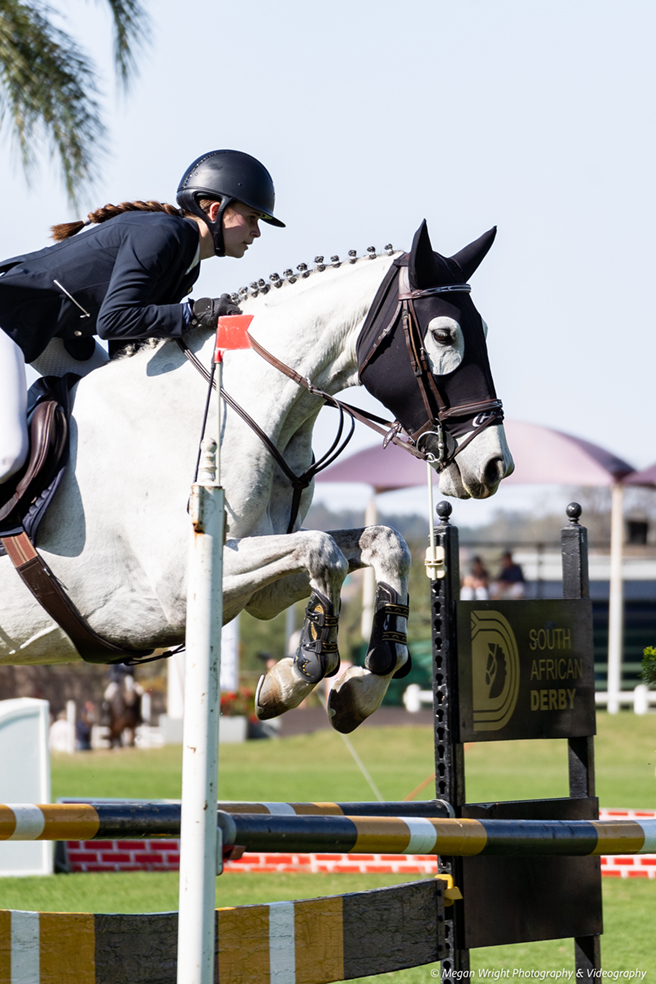
Q: What results and achievements are you most proud of in your riding?
EK: I was the overall winner in the FEI Jumping World Challenge RSA - Category B and the overall winner in the FEI Children’s Gold Tour RSA (before the competition started in Mexico).
Q: How do you handle /stress pressure during competitions?
EK: I have one breathing exercise that I do, but otherwise, I just go in and deal with it.
Q: How do you balance your equestrian training and competition with other aspects of your life?
EK: The only other sport I do is athletics, which I do for a very short amount of time each year. So, after school, I go straight to riding, and then I come home with just enough time to finish either schoolwork or anything else that would have to be sorted out.
Q: What does your daily routine look like?
EK: On a normal day, I wake up and go to school. Straight after school, at 2.45 pm, I go horse riding, where I usually ride two to three horses. I come home at maybe 5pm and finish any schoolwork, and then I go to bed.

Q: What do you consider to be your greatest strength as an athlete?
EK: I never give up and try to always stay very consistent with my riding. For me, if something is possible in any way, I will believe that I have to try, no matter the risk or effort.
Q: Describe a challenging situation in your equestrian career and how you overcame it.
EK: I had a very bad confidence knock on one of my horses, and he just wouldn’t jump for me. So now we are slowly building back confidence, and I feel much better riding him now as we have built a bond again.

Q: What keeps you motivated to keep riding?
EK: Making everyone around me proud and happy is the one thing that keeps me motivated, besides my tremendous love for horses.
Q: What are your long-term goals?
EK: I hope to move up the heights, but also make sure that I keep riding well as I go up and hopefully win some big titles in the 1.30m/35m classes.

Q: What is the most important piece of advice your coach has given you?
EK: Any negative comment or feeling must be like water off a duck's back; you must just try to let it slide right off.
Q: Who have been the most important people in your life?
EK: 100% my family. All of them support me from all over the world, and I love them all so much.
Q: Who is the biggest influence in your career?
EK: I would probably say my coach (Michael Blom).
Q: Who is your equestrian Idol?
EK: Jessica Springsteen. She is a really humble and sweet competitor.
Q: Who is your favourite showjumping horse (past or present)?
EK: I can’t really pick one because there are so many incredible horses. But I have to say that one of them is King Edward. He just backs himself up so nicely for the jumps, and his technique is insane.
2024 FEI CHILDREN'S CLASSICS FINAL
Q: What was it like qualifying for the final?
EK: It felt incredible. I actually cried when I found out I was going to Mexico because I felt so lucky and grateful for such a big opportunity.
Q: How did you prepare to compete at the 2024 FEI Children’s Classics Final?
EK: I just rode as many different horses as I could. Thankfully, a lot of people in my yard were willing to let me ride their horses.
Q: What was your first impression on arriving at the 2024 FEI Children’s Classics Final?
EK: The venue was mind-blowing, and I was very excited to compete in the event.
Q: Tell us a bit about the horse you drew.
EK: Her name is Free Swing, and she is a very strong and hot-blooded mare. She is quite hard to turn tight with and will stop at jumps if she can, so you have to be strict to every jump. She tends to be sweet on the ground but can bite in the stable, but anytime she is outside, she becomes happier.
Q: What were your fellow competitors like?
EK: The other competitors were all very kind and sweet. I made good friends with the Australians who were competing at the competition.

Q: Did you meet any well-known riders, coaches or officials?
EK: I met Ricardo Nizri (Owner of Rancho Salazar) and Marijin Dubbeldam (FEI).
Q: What were your personal goals for the 2024 FEI Children’s Classics Final, and do you think you achieved them?
EK: Just making it to the show was such a big achievement. I was hoping to maybe make it to the top ten but unfortunately, I got a very hard horse to work with for the show, but overall, I was very happy with the show.
Q: What was the most challenging part of the 2024 FEI Children’s Classics Final competition?
EK: The most challenging part was that we had to swap horses. I only had one training session with the second horse, which was a huge disadvantage for me. We also had to borrow tack for that horse, so we had a lot to deal with.

Q: What was the most important piece of advice your coach gave you about the competition?
EK: Focus on the positive. We already made it to the show, and just being there was a huge achievement by itself, so even if I didn’t do as I hoped, I still did the best I could, and that’s very important.
Q: Do you have one lesson from the 2024 FEI Children’s Classics Final to carry forward in your career?
EK: Even when someone or something brings you down, remember to try to be the better person and move forward because carrying something like that can just make things worse.
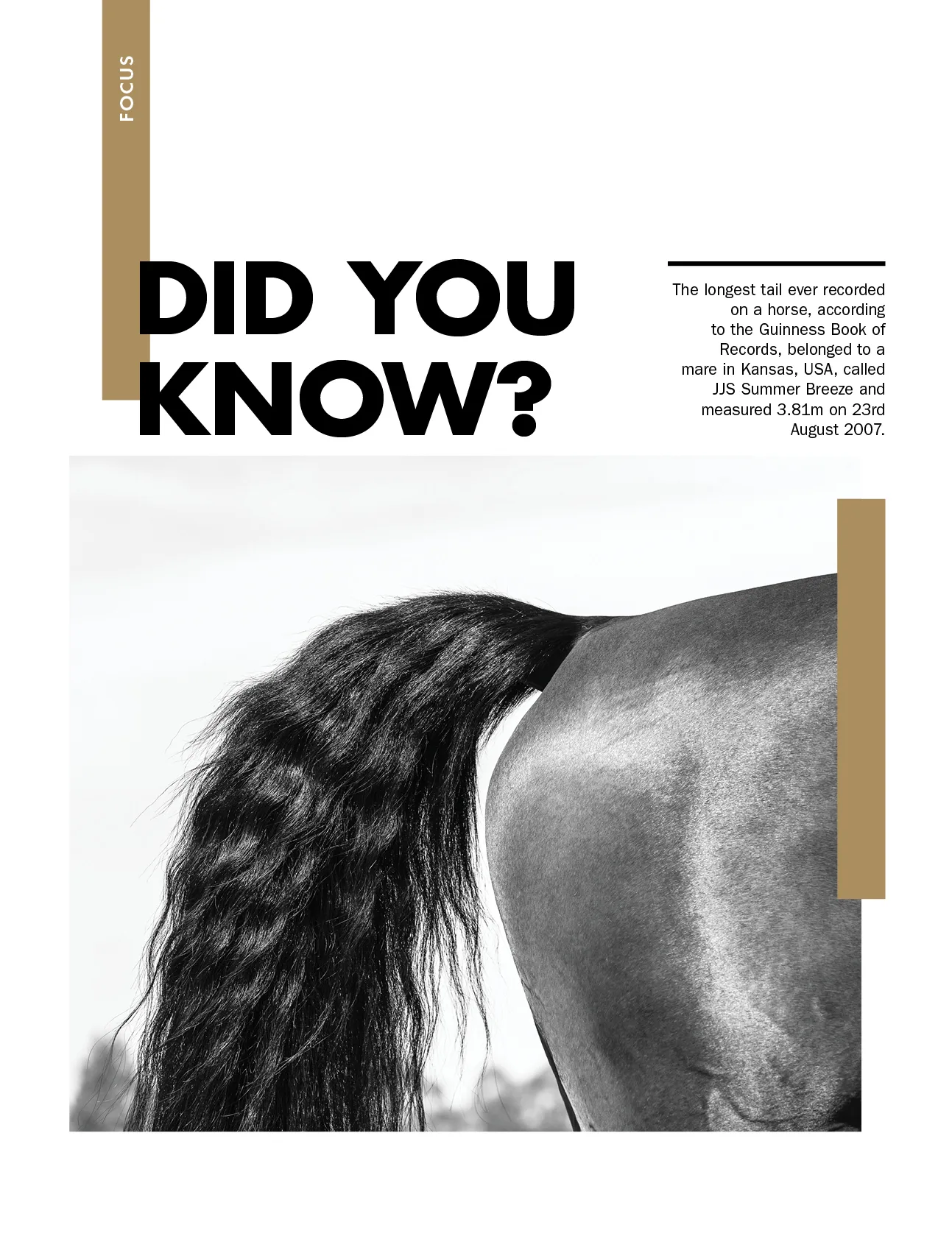
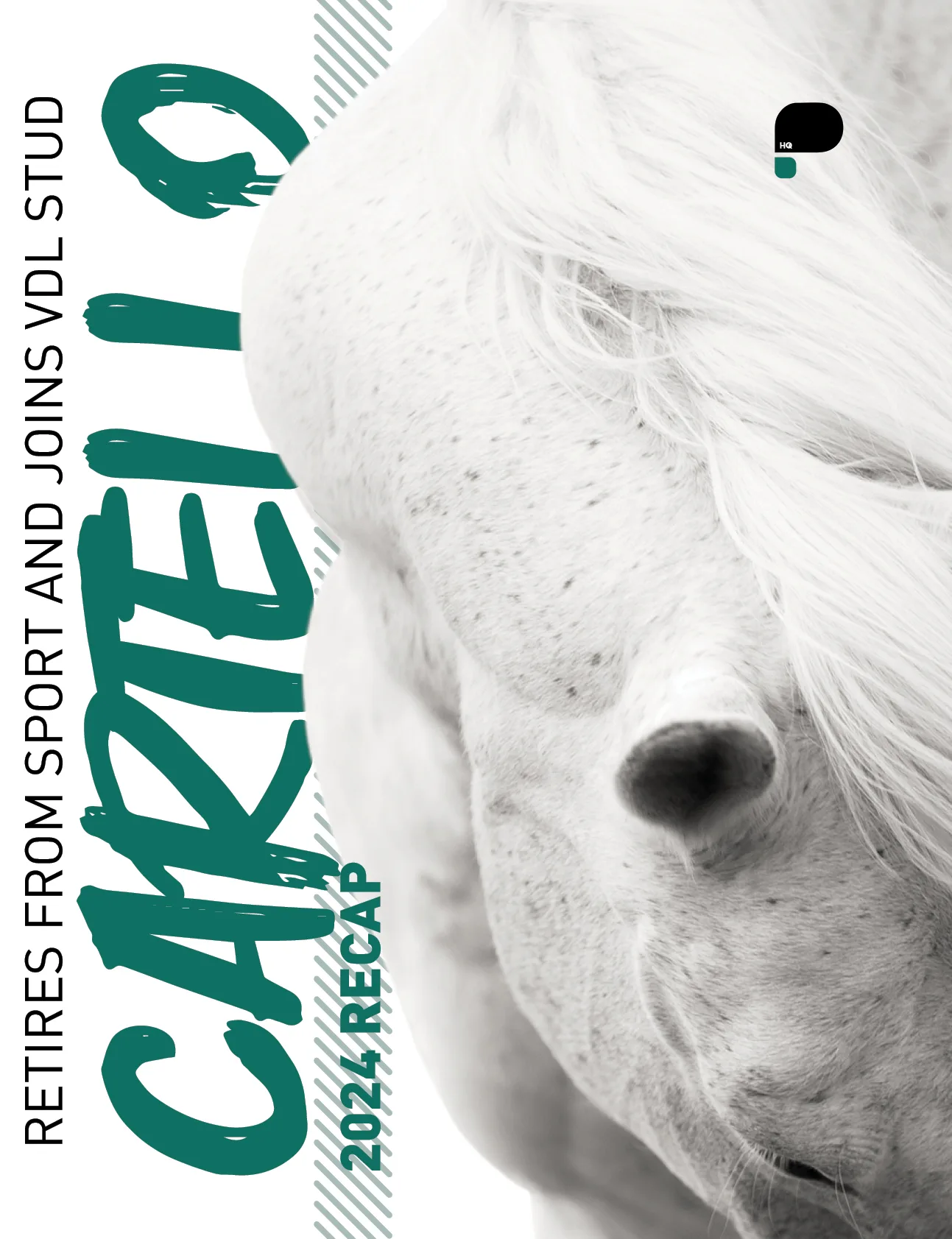
PHOTOGRAPHY: megan wright photography and videography
Divan Bosman and Victoria Greyvensteyn qualified to compete in the FEI Jumping World Challenge Final 2024 in Tashkent, Uzbekistan. Divan put in an excellent performance aboard his drawn horse, a spunky Thoroughbred mare called Queen. SA Showjumping caught up with Divan to get to know him a little better and find out more about his experience at the Final.

Q: Tell us a little about yourself.
DB: My name is Divan Bosman. I was born in Centurion and am 18 years old. I have three brothers, and I am the second youngest. We started horse riding as a family in 2010 when I was five years old, and then it eventually evolved into showjumping, with all the brothers starting out. Currently, the three of us compete in showjumping.
Q: Tell us about your current string of horses.
DB: I currently have four horses, namely Zhak, Nobello, Balvenie and Carmen. They all have different personalities. For instance, Zhak is spooky and naughty like a teenager; Nobello is calm, strong and honest; Balvenie has a big heart and just wants to jump; and Carmen is young and playful but also has a big heart for jumping. Carmen is still inexperienced and needs a lot of training.

Q: What would you say are your biggest achievements in the sport so far?
DB: I am most proud of winning the FEI Category A in 2023 and all the legs of the FEI Category A Competitions in 2024. Another highlight was winning the Junior 1.35m SA Champs in 2024 as well as the Micro Adult Derby in 2024. I won all of the above with my magical horse, Cornerstone’s Midgard Zhakiro.
Q: How do you balance your equestrian training and competition with other aspects of your life?
DB: I spend afternoons after school on equestrian training and attend to school work in the evenings.
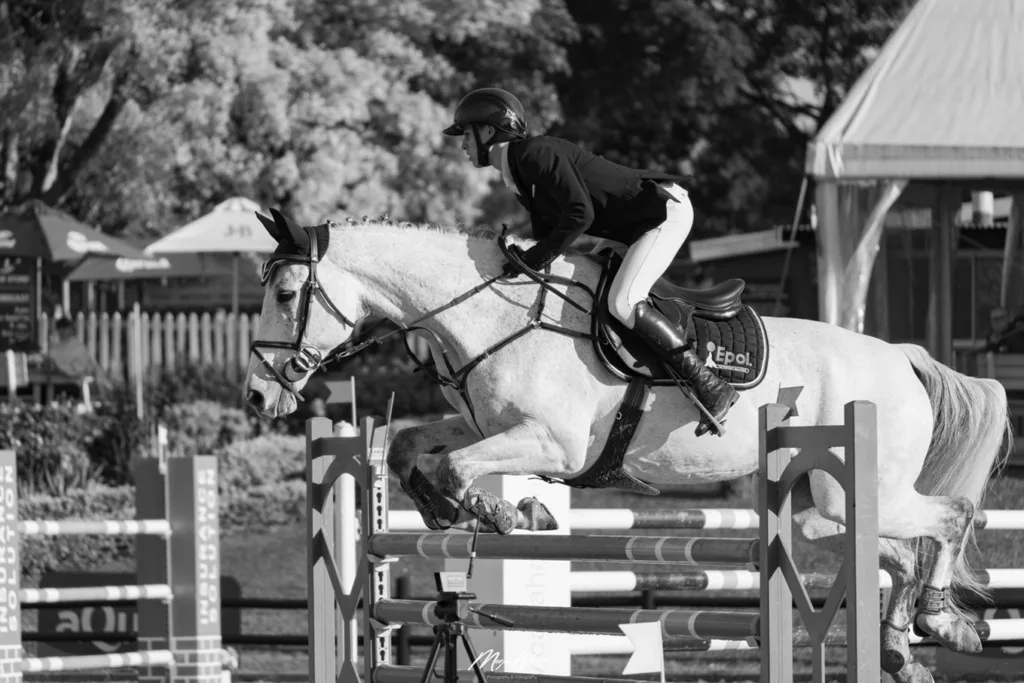
Q: Do you have any other hobbies outside of riding?
DB: Horse riding is my passion, and, therefore, I do not do other sport. My passion for horse riding is so strong that I do not want to jeopardise my opportunities in the sport. I made the mistake once to play rugby and dislocated my knee. This could have affected my showjumping career negatively. Luckily, we were able to manage the injury so that I could continue to compete, but this made me realise that I have to act responsibly by not competing in other sports and dangerous activities, which could affect my showjumping career negatively.

Q: How do you handle pressure during competitions?
DB: I tend not to be too nervous during competitions and have found that I perform better when I am under more pressure. Due to my bond with my horses, I can trust them fully, which also makes it easier to deal with the pressure.
Q: Describe a challenging situation in your equestrian career and how you overcame it.
DB: During my career I had several ponies and horses where things don’t go according to plan. For instance, not getting around tracks without poles, not getting through combinations, refusals at jumps, etc. I’d persevere by working through these challenges until I achieved success. I owe these achievements to Cornerstone’s Riddle and Cornerstone’s Midgard Zhakiro, who both showed me what can be achieved with perseverance.
Q: What do you consider to be your greatest strength as an athlete?
DB: My greatest strength is not giving up, no matter how big the challenge I am facing.
Q: What keeps you motivated to keep riding?
DB: My biggest motivation is the love of my horses and the competition. I have lots of support from my family and people close to me to keep me going.
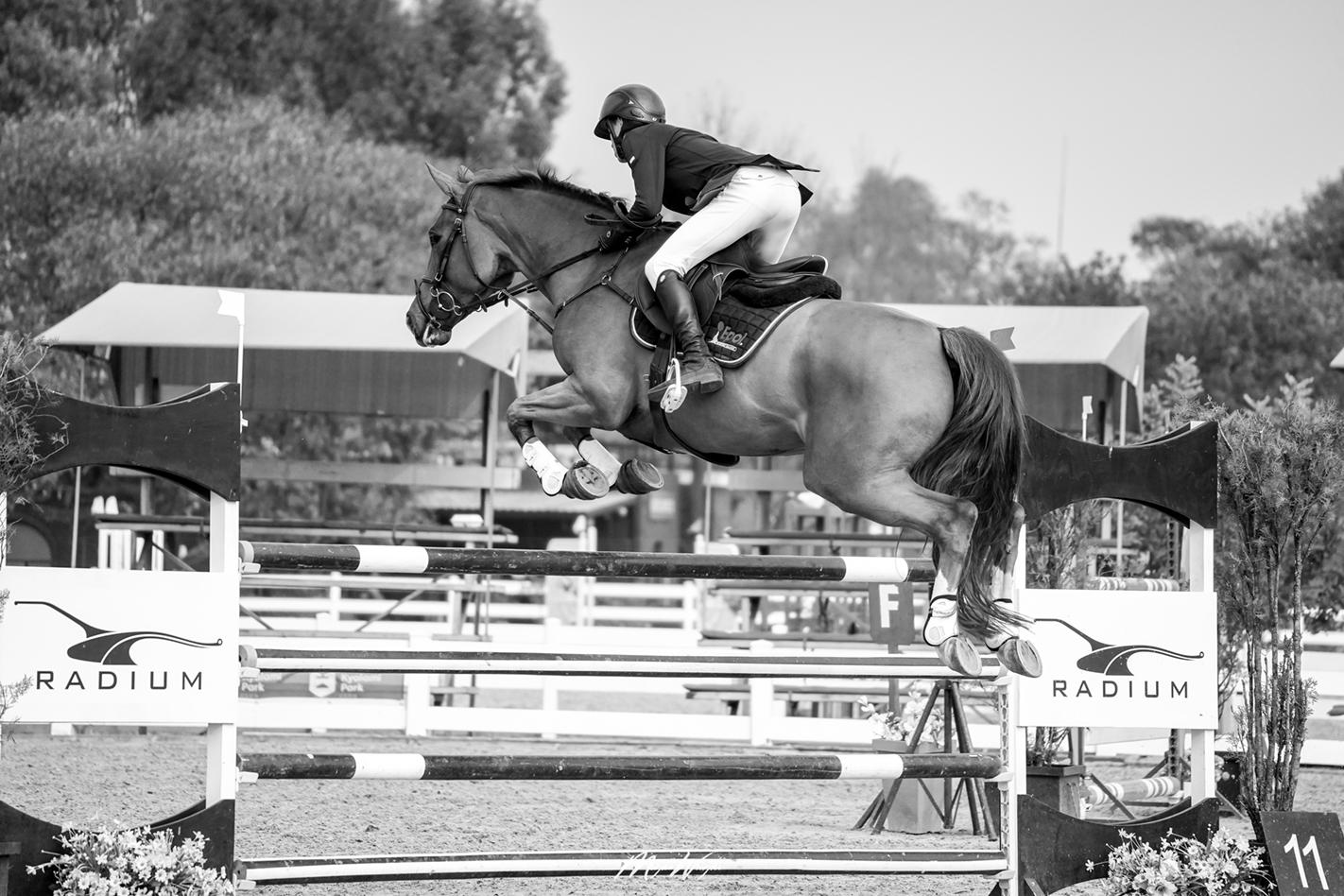
Q: Who is your equestrian idol?
DB: Henrik von Eckermann.
Q: Who is your favourite showjumping horse (past or present)?
DB: My one and only Cornerstone’s Midgard Zhakiro.
Q: What is the most important advice your coach, Anthon Hoek, has given you?
DB: Apart from ‘keep the contact’, ‘legs’, ‘sit up straight’ and ‘one jump at a time’, he has taught me to never give up on a horse.
Q: Who is the biggest influence in your career?
DB: My parents and my coach because they make sure I keep riding and do not give up on my career.
Q: Who have been the most important people in your life?
DB: My family, my coach and my girlfriend. I am grateful for all their support.
Q: What are your long-term goals?
DB: It is my dream to compete in five-star Grand Prix’ and the Olympic Games one day.

2024 FEI JUMPING WORLD CHANLLENGE FINAL
Q: How did you prepare to compete at the 2024 FEI Jumping World Challenge Final?
DB: I prepared with the help of my trainer, Anthon Hoek. We were able to go to other yards and ride on different types of horses to experience various kinds of rides. There is also a wide range of horses at Cornerstone Equestrian Centre, who I could ride to get exposure to different rides.
Q: What was your first impression on arriving at the 2024 FEI Jumping World Challenge Final?
DB: We felt like celebrities. We were welcomed on a red carpet at the airport and treated like royalty throughout our visit to Uzbekistan. We were really impressed.
Q: What was the best advice Anthon gave you for the 2024 FEI Jumping World Challenge Final competition?
DB: To stay calm and enjoy it no matter what the horse does. He told me to just keep on riding.
Q: How did you handle the pressure of competing at a competition like the final on a borrowed horse?
DB: I was not intimidated by the pressure of riding a borrowed horse. All I knew I had to do was apply my own riding experience to make the best of the competition. I knew I had to give my best, make the best of the circumstances, and enjoy it at the same time.
Q: Tell us a bit about the horse you drew.
DB: I drew a very nice small Thoroughbred mare named Queen. She was a completely different ride from what I am used to. She was very spooky but had an amazing jump and a very sweet personality. We had a little trouble with poles in all our rounds, but we managed to get a clear round on the last day of the competition.
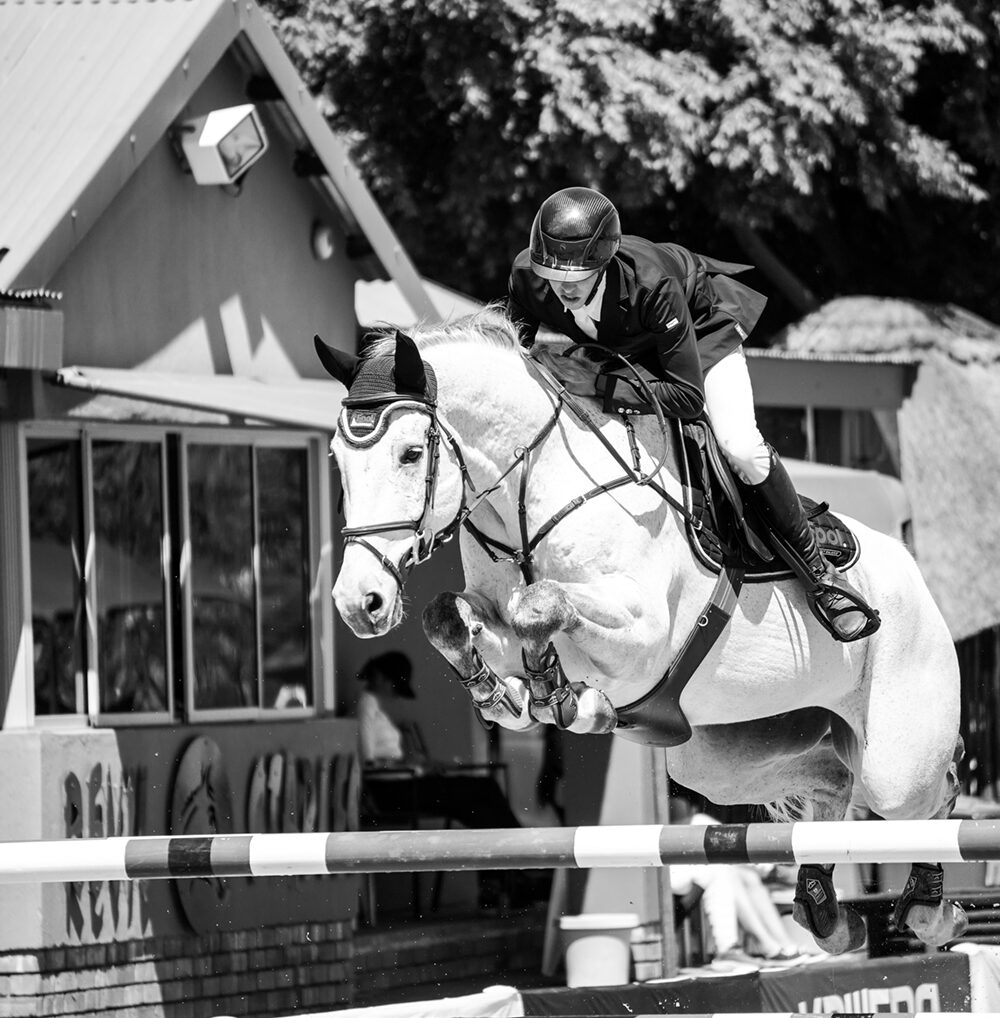
Q: How do you support your fellow SA riders when competing as an individual in a competition like this?
DB: I believe the best way to assist a fellow SA rider if they are struggling is to provide positive encouragement and remind them of their achievements.
Q: What were the other competitors like?
DB: It was interesting to see the age gap between all the competitors.
The youngest was 15 years old, and the oldest was 60 years old. I made some friends from Algeria, who I hope to see again at future competitions.
Q: Did you meet any well-known riders, coaches or officials?
DB: One of the competitors competed in the Olympic Games 15 years ago and I also met the President of the FEI of Uzbekistan.
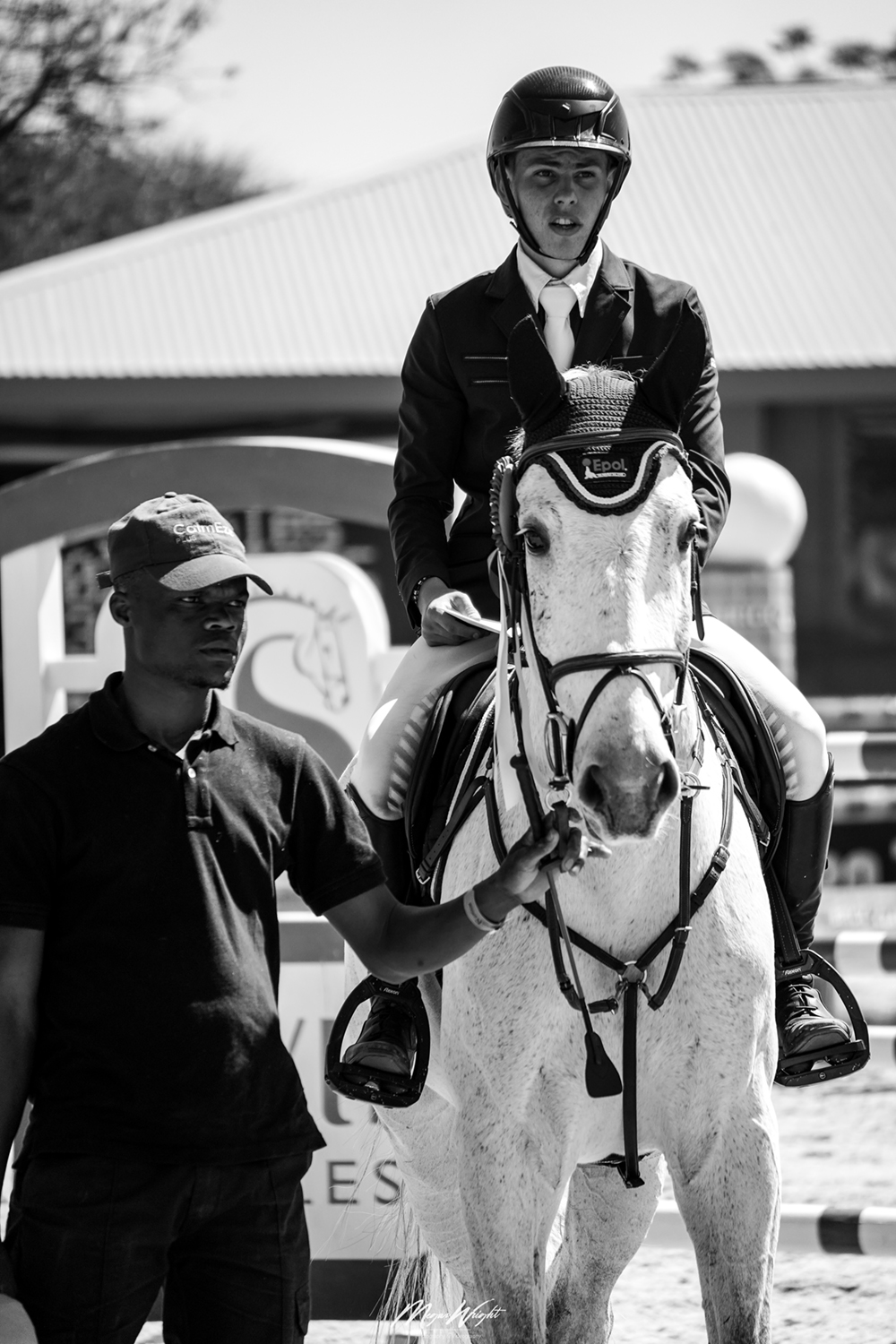
Q: What were your personal goals for the 2024 FEI Jumping World Challenge Final, and do you think you achieved them?
DB: My goal was to do my best on the horse I drew, and yes, I think I achieved this goal. Although I did not win, I gave it my all with my horse, Queen. In the end, I achieved third place in the Farewell Competition, for which I received a medal.
Q: Is there one lesson from the FEI World Challenge you will carry forward in your career?
DB: The lesson I learnt was not to give up on the horse I had to compete with. I proved to myself that if you don’t give up, you will achieve success.

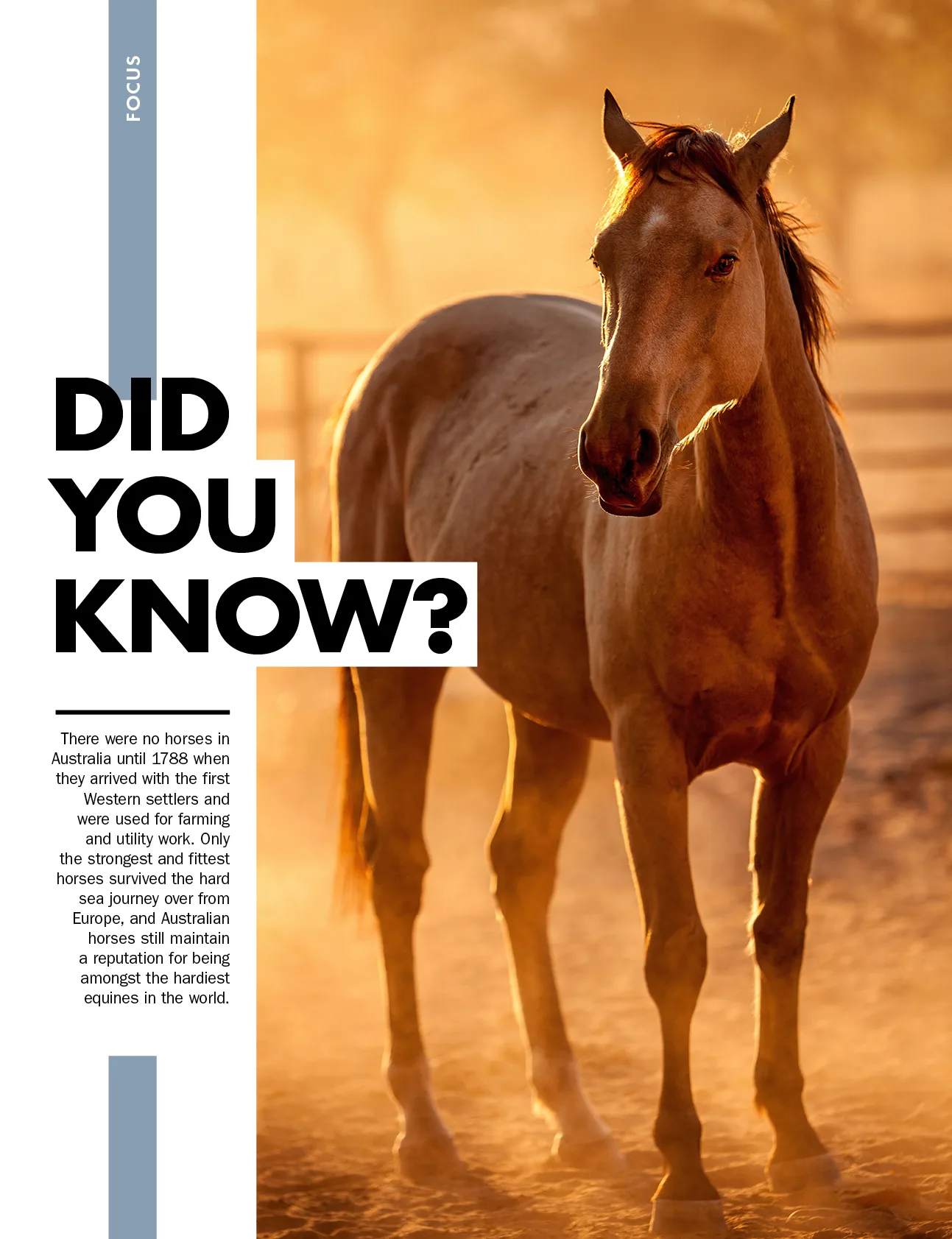
PHOTOGRAPHY: megan wright photography and videography
Luca Watson and Ela Vita Kastelic qualified to compete in the FEI Children’s Classic Final 2024 in Mexico. Luca made it through to the Final of the competition in Mexico, achieving an impressive eighth place. SA Showjumping caught up with Luca to get to know him better and learn more about his experience in Mexico.

Q: Tell us a little about yourself!
LW: I was born in Johannesburg on the 4th of February 2010. I have an older brother and a younger sister, and we live in Beaulieu. I am in Grade 8 at Beaulieu College. My mum's side of the family is small, as my grandmother was adopted, and we didn’t know her family. My mum’s father was Italian, and we weren’t that close to his extended family due to language barriers and geography, but my mum has two sisters, and I have one cousin. On my dad’s side, his family is bigger, but his parents and their siblings are scattered between Durban, Australia and the UK, and I don’t have any cousins. Nobody apart from me went into equestrian sports of any kind, and I started riding at age seven at Farnham Riding School. My mum was a Springbok Gymnast and a National Champion, and my dad a Springbok Motor Racer and a Test Driver in Formula 1, so my choice of sport was a little amusing to them in the beginning until they realised I wasn’t going to change my mind!


Q: Tell us about your current string of horses.
Carlson 113 – Sunny is exceptionally impatient, quirky, clever, talented and a total professional in the ring. He has thrown me off in the warm-up a few times when he suddenly spins or rears – so I have to be awake at all times with him. We call him Head Boy because he does everything right, first time, in all lessons - so his lessons are always very short! He also sometimes decides on his own that we have done enough warm-up jumps and just leaves the arena, refuses to go back in, and heads down to the ring. He is my heart horse who saved my riding career at the lowest point, and I owe him all my successes. Sunny is the perfect combination of an unbelievable sporthorse in the ring and a best friend and teammate outside it.
Habanero S – Hubs is new to my string, and we jumped and won our first 1.30m together just before I flew to Mexico. She is powerful, elastic and scopey and is not a mareish mare. She is loving and kind, and we all adore her at home already. She is extremely agile and super quick – and covers a lot of ground. I am really privileged to own a horse of her calibre and excited about our future together.
Callaho Con Cero – Con Cero is a scopey, big horse who jumped in the 1.30m classes with me last year before injuring his neck and requiring surgery in SA by an SA-born British surgeon, Dr Matt Sinovich, as nobody here had ever done the surgery before. He is currently working steadily through a rehabilitation programme, and I can’t wait to have him back jumping with me in 2025. He is kind, impatient, quirky (loves to nibble on everyone), and enormously powerful, scopey, and strong.
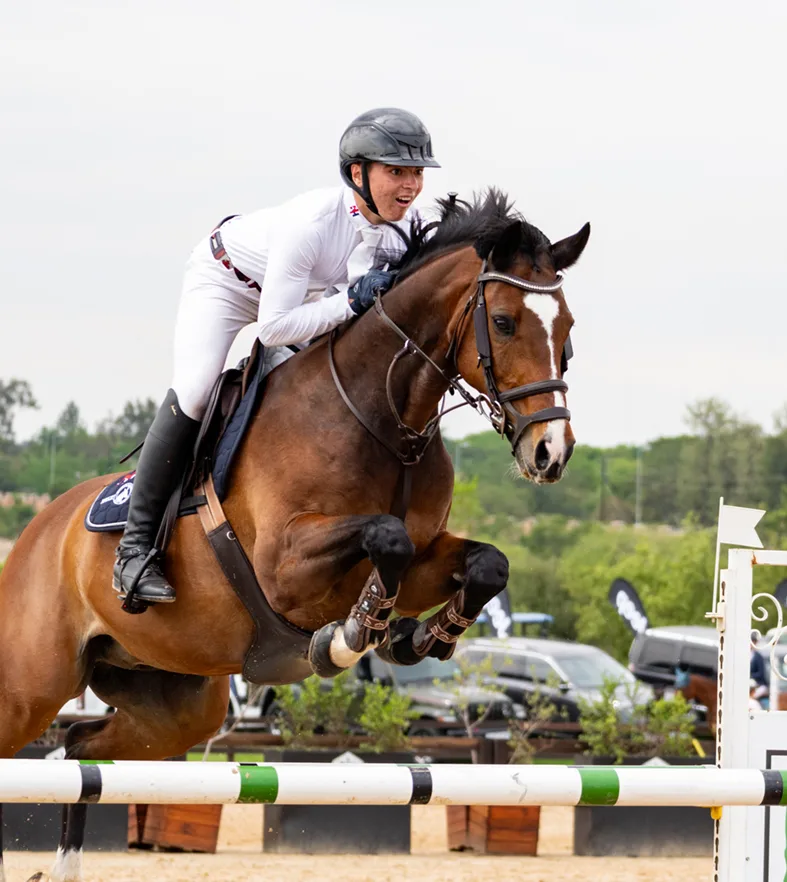
Q: What would you say are your biggest achievements so far in the sport?
LW: Obviously, first and foremost, my greatest achievement is having been awarded my Protea Colours for qualifying for the 2024 FEI International Children’s Classic Final. I also qualified for the final last year, but no venue stepped forward to host the event, so finally being awarded my Colours and representing my country on foreign soil was the proudest moment of my life so far in the sport for sure.
I also think my greatest personal achievement is being the youngest child to jump in the Junior 1.35m classes, having jumped my first 1.35m class when I was 14 years old in February this year on Carlson 113. Since then, I have continued gaining mileage successfully at this height all year and I’m very proud of competing at the top level of my Junior category whilst still this young. I cannot get a dual licence to compete any higher until I turn 16 (Feb 2026), which is a little frustrating because I already have nine QR points in the 1.35 classes!
Outside of this, I would say some definite highlights are as follows:
1. Eighth in the World for the 2024 FEI International Children’s Classic Final
2. Five times Gauteng Team Member (three Golds and two Silvers)
3. Three times Reserve South African National Champion
4. Ranked in the Top 10 of the National SASJ online rankings every year since I started riding
5. Two times Gauteng Champion
6. Post Derby Champion
7. Pony Rider Open Spring Fair Champion 2021
8. SASJ Challenge Gauteng and National Junior Open Overall Champion for 2023
9. Reserve Junior Open Presidents Cup Champion for 2024
10. Third place in the 2024 Junior Open Derby
11. Three times SANESA Gauteng and National Champion for Level 7 (Open) (2022, 2023 and 2024)
12. Top Ranked Junior 1.35 rider for 2024 on the SASJ Online Rankings

Q: How do you balance your equestrian training and competition with other aspects of your life?
LW: Riding is my main sport, but I also really love rugby and football. I pack a lot into my days where I ride all my horses and still manage to get to rugby or football practices and matches whilst still attending all my weekly appointments for NLP, Bio and the Simulator. I have gotten into a good routine, which involves a lot of driving for my family, but it works well, and I like to stay busy, fit and strong - so I have to make it work. I am also very blessed to have an exceptional work rider, Sarah Williams, who can hop onto my horses and work them on the flat when needed if I am really stuck and we have a major conflict. However, nine times out of ten, I school my own horses and make it work.
Q: What does your daily routine look like?
LW: I wake at 6.30am, make a protein smoothie and head to school until 2.30pm. Then I quickly change, eat a healthy lunch, ride all my horses (lessons are only on Wednesdays and Thursdays), and then head to soccer or rugby. On Tuesdays and Wednesdays, I have NLP, and on Mondays and Fridays, I have the Biokineticist and the Simulator, too. Once those are done, I head to Touch Rugby at my school field with the adults or soccer with my grooms on the grass field outside KPC. Then I shower, do my schoolwork and eat a healthy dinner before crashing at around 10pm.
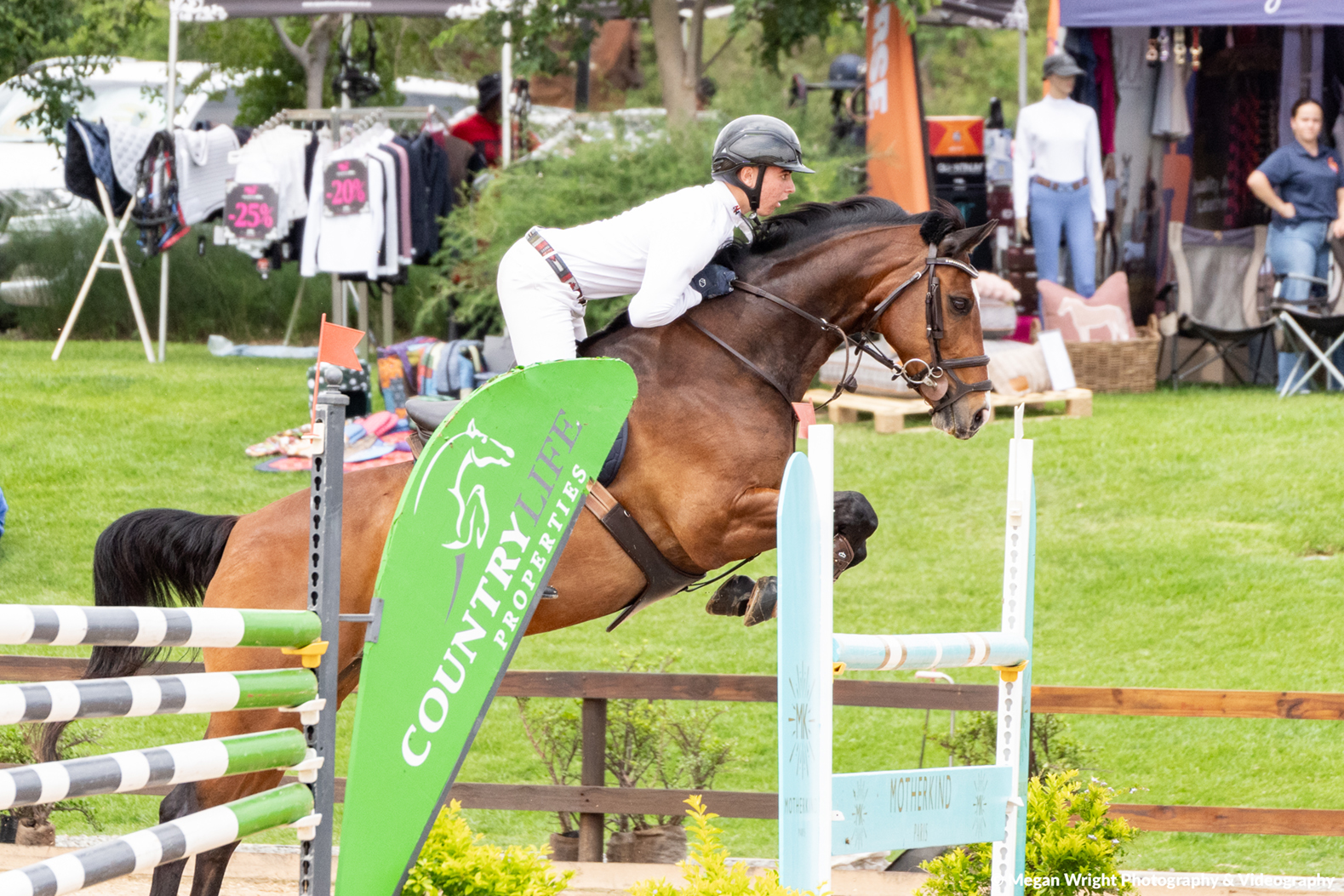
Q: How do you handle social media as an athlete?
LW: My circle is now very small, and I am particularly guarded and cautious about social media and its pitfalls. People are very brave, hiding behind their screens, and things are said and done on there that would never happen if it was stuck on a billboard against their names for all to see. I have learnt that success is a lonely place and not everyone who says that they are your friend is actually your friend. Some people will love you because it’s you, and others will hate you because it’s you – and you just have to find your people. So I keep my circle of trust small and keep to myself mainly, and I just focus on my riding and loving and looking after horses, and the rest will take care of itself. I handle all my own social media pages professionally for my loyal and amazing sponsors to ensure they get the exposure they deserve through my conduct and results, but outside of that, I am very cautious about social media and keep my use to a minimum.

Q: How do you handle pressure during competitions?
LW: Chad (Cunningham) always tells me pressure is a privilege. I work with an NLP practitioner to help focus my mind, thoughts and reactions and have previously also worked with a Sports Psychologist as I believe controlling your thoughts is by far the biggest skill we need to learn as riders. There are lots of talented riders and exceptional horses, so what sets us apart will be our ability to control our nerves, thoughts and actions in the ring. I use breathing techniques and positive self-talk to manage the pressure, and, of course, I ensure I am as well prepared as I can possibly be mentally, physically and emotionally for each show. I work with a Sports Nutritionist to control my weight and lean muscle mass, and I work on the simulator and with a Biokineticist every week.
Q: Describe a challenging situation in your equestrian career and how you overcame it.
LW: In 2021, my Open Pony, Treat, tore his deep digital flexor tendon at Derby, four days after I had won the Open Pony Rider Spring Fair on him - and it was career-ending. I was absolutely devastated. I only had Treat and my family couldn’t afford to buy me another Open Pony, and there weren’t any good ones on the market at the time anyway. I spent time in the lower grades producing a talented pony called Blue Ivy, and only when my mum sold her car some seven months later to buy Callaho Madeleine did I return to the bigger classes and become competitive again. This situation was heartbreaking for me, obviously, as I lost the ability to ride my heart horse, Treat, but in waiting for Maddie and through my family’s sacrifices, I also learnt patience, gratitude and resilience. These were tough lessons for a competitive 11-year-old.
In 2023, I had a major confidence knock, which affected all aspects of my life. Not just my riding. I worked so hard with a psychologist, with the support of my family and with Chad, to regain my confidence and belief in myself and to start caring less about what people were saying and what they thought of me. It was a huge struggle and was one of the toughest moments of my life, but I have learnt so much from that experience, and I am definitely stronger and more mature for it.

Q: What keeps you motivated to keep riding?
LW: Pure love and respect for the horse. Regardless of my achievements, I love the animal so much, and that is what inspires and motivates me – to be around horses and to take care of their wellbeing.
I am very committed to my horses’ well-being. Their happiness is my priority, and I have been known to scratch many a class at the first sign of there being anything remotely off with one of them. Their love of jumping and love of their jobs is what motivates me and, of course, that feeling of jumping around a track successfully. I love everything about competing and the challenges that come with it. I don’t see myself in any other industry in the future, so as long as my horses are sound and happy and love competing alongside me, I will be out there doing what I love.
Q: What do you consider to be your greatest strength as an athlete?
LW: Compassion and selflessness for others and for my horses. Even if I don’t do well or have a bad round or show, I am always the first to congratulate my friends and be happy for them. This is not something all riders in our industry do, and I am proud of his quality. I am also mentally resilient after my struggles in previous years, and resilience is a really important character trait in our sport, where we have many more failures than we do successes.

Q: What is the most important advice your coach has given you?
LW: At my lowest point last year, Chad told me that I am on my own journey and that I must not compare myself with anyone else. He said it's okay to drop down heights to gain confidence and that it doesn’t matter what others around me are doing; only what I am doing matters. This really helped me and has been the most influential chat anyone has ever had with me so far in my riding career.
Q: Who has had the biggest influence on your career?
LW: Chad as the Coach, and Ronnie Healy as the rider. I want to ride like Ronnie. Thanks also to Chatan and Evi Hendriks for their continuous guidance, experience, and support.
Q: Who have been the most important people in your life?
LW: Chad and my family. Chad has, without a doubt, completely changed not only my personal life but also my riding career. He has taken me from my lowest point to my highest and has been one of the most important people in my life. I will forever be grateful to him.
My family is always there for me, always trustworthy, and always so supportive of my dream and what I want to achieve in life.
Q: What are your long-term goals?
LW: I would like to go to the Youth Olympics and represent my country. This goal is crystal clear in my mind and this is what I am working towards.

2024 FEI CHILDREN'S CLASSICS FINAL
Q: How did you prepare to compete at the 2024 FEI Children’s Classics Final?
LW: I competed my own horses right up until the weekend before we left, and Chad lined up multiple other horses that go in various different ways for me to ride. I also worked with Natalie at NLP for my mental preparation. I also bed down on my diet to strip away any fat and have clean muscle weight only for the show. I also worked on the simulator twice a week (instead of once) in the last few weeks before I flew out to ensure my balance in the saddle was correct.
Q: What were your first impressions on arriving at the 2024 FEI Children’s Classics Final?
LW: That the quality of horses was very high and that the host nation and FEI were super organised and hospitable.
Q: What were your fellow competitors like?
LW: Everyone was like-minded, and I really believe I made some incredible friendships that will last a lifetime.
Q: Did you meet any well-known riders, coaches or officials?
LW: No, just the venue owner, Riccardo Nizri, who was incredible with us and whose hospitality was next level.

Q: How do you support your fellow SA rider when competing as an individual in a competition like this?
LW: I think it’s very important to offer support and encouragement and to be open to sharing any tools you have with your teammates. Although you are competing as an individual, at the end of the day, you all ride at home at the same shows, and there really is enough sun for everyone—and I never like to see other riders struggle.
In the very first warm-up in Mexico, it was clear to me that Ela was struggling with her chosen horse (which she later substituted), so I immediately entered the warm-up and tried to help her stay calm and focused by talking to her and suggesting a few things she could think about/try. Like in SA, I have often done the same for Ela at shows and for many other riders who I sensed were struggling, and they have always been appreciative and grateful. It’s never nice to see anyone struggling, as I have been there myself, and so whether in SA or abroad, I will always offer my help and make suggestions. This will never change as it’s just who I am and who I have always been. I am supportive by nature.
Q: What was the most important advice Chad gave you for the 2024 FEI Children’s Classics Final Competition?
LW: Chad knew my head was in the right place and that I was calm and ready, and he just ensured I knew he believed in me, that he was proud of me and that I had the potential and the ability to go and do something amazing.
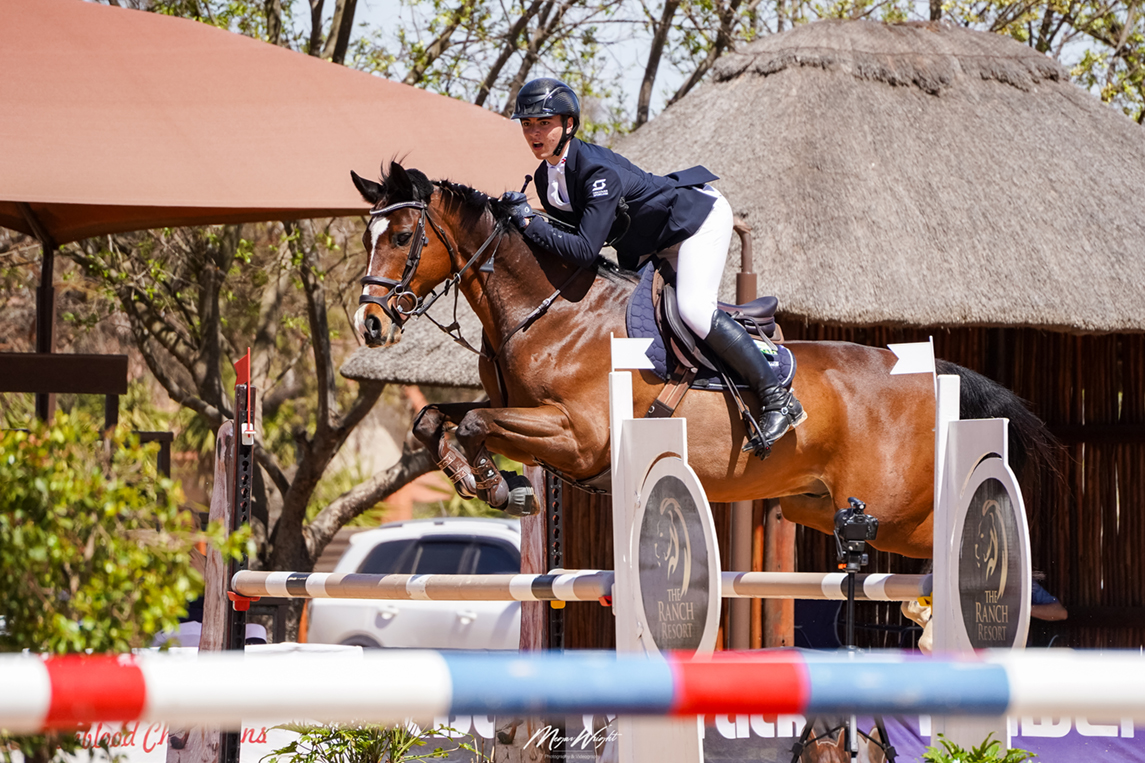
Q: How did you handle the pressure of competing at a competition like the final on a borrowed horse?
LW: You are never going to get a borrowed horse that totally suits your style of riding or is the same as your horses at home, so I believe the trick is to accept the horse you have chosen and get on with getting the very best out of the horse you can possibly get without trying to change it to suit you or to expect it to be like your horses at home. Although a schoolmaster and a very kind and gentle gelding, Volendam was not the kind of ride that I would usually enjoy. At 22, he for sure lacked the speed and energy of the other horses in the field, but my focus was on getting the best out of him and allowing him to go in the way he was accustomed to. I wanted to be able to look myself in the mirror each night after each show round and say that I rode stylishly and accurately and that I didn’t make any mistakes. I wanted Chad to be proud of how I conducted myself in the ring and for him to tell me that I rode each round well. That was what was important to me – and I achieved that.

Q: What was it like qualifying for the final when you were in Mexico?
LW: It was the most unbelievable feeling to know I made the top 16 from 32 riders and that I would be competing in the Final. I was so proud and excited, and I just wanted to continue to show that I could confidently and stylishly ride on the world stage on a borrowed horse under pressure and that I had what it takes to keep it together and make the best of it.
Q: What was the most challenging part of the 2024 FEI Children’s Classics Final competition?
LW: Getting used to a new horse in a short period of time, understanding their strengths and weaknesses and adapting to get the best out of them.

Q: Do you have one lesson/experience from the 2024 FEI Children’s Classics Final to carry forward in your career?
LW: You have to take responsibility for your actions and control how you handle events as they unfold. This sport is unpredictable and extremely humbling, and you have to adjust and quickly adapt to what is in front of you and underneath you.
Q: What were your personal goals for the 2024 FEI Children’s Classics Final, and do you think you achieved them?
LW: Before the show, I wanted to get onto the podium, but I reset my goals and expectations after the draw to then make the final and get into the jump-off. I also wanted to ensure I rode well without any mistakes in every round.
Q: What made the event extra special for you?
LW: Finishing in the Top 8 in the world from 32 starters, and getting to hang my country’s flag on my back for all the world to see, and then coming home with a beautiful ribbon.


The equestrian coaching set-up in South Africa is relatively unique compared to the rest of the Western world, where most coaching research has been conducted and incorporated into coaching qualification pathways that have been in place for decades.
According to British Equestrian, the term 'coaching' refers to teaching, instructing, training and all methods of improving a rider or horse/rider partnership.

In the United Kingdom, for example, there are three key pathways one can take to become a qualified coach: the British Horse Society (BHS) Equine Excellence pathway, the Riding for the Disabled Association (RDA) Coaches pathway or the Equestrian Coaching Certificate pathway (UKCC). These qualifications primarily ensure that coaches’ knowledge and practice meet the proper standard to ensure pupils and horses remain safe, which, considering how dangerous our sport can be, is imperative. Coaches also need to maintain their coaching ‘compliance’ in the UK; this means that coaches must ensure they have up-to-date First Aid and Safe Guarding qualifications and have undergone a Criminal Records Check (for safeguarding purposes).
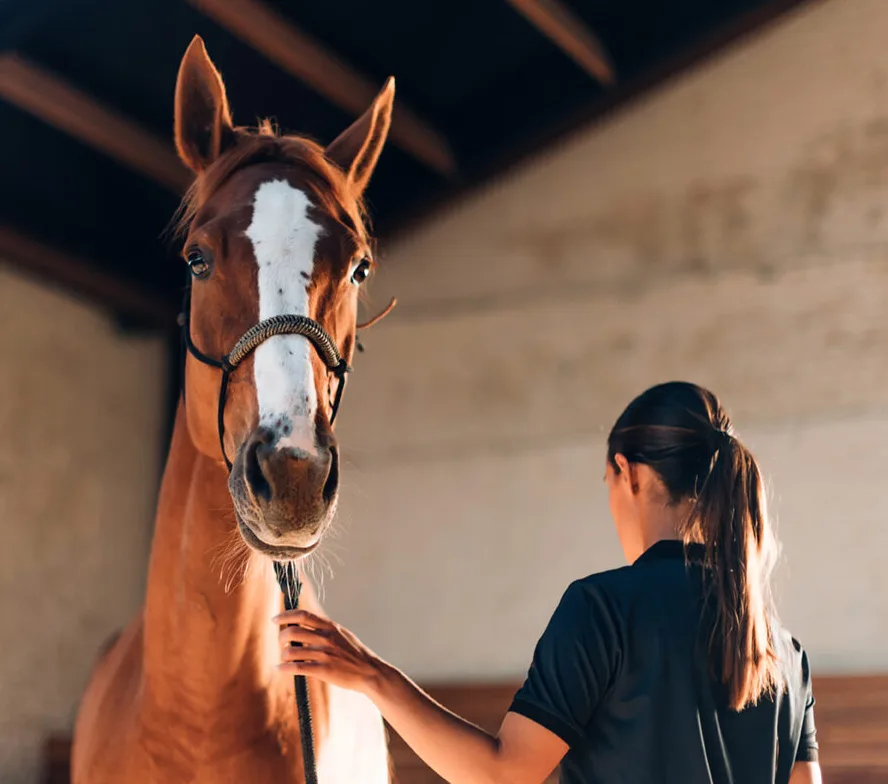
SOUTH AFRICA
In South Africa, there is generally more confusion around the coaching pathways available. The most prominent pathway is the Equestrian Qualification Authority of South Africa (EQASA) pathway, which evolved from the SA National Equestrian Federation’s National Instructors Plan (SANIP) and offers a path of seven modules addressing all equine and equestrian educational needs. However, one needs to progress past Module 4 to be considered an Assistant Instructor, and Modules 5-7 represent international levels of coaching (i.e. equivalent to the UK), at which stage individuals become fully fledged coaches endorsed by the SAEF (South African National Federation).
EQASA is also a member of the International Group of Equestrian Qualifications (IGEQ), which means qualified coaches can apply for an FEI-recognised International Coaching Passport and become members of the Council of Equine and Equestrian Professionals of South Africa (CEEPSA), which awards the professional designation of equestrian coach.
There are a handful of other routes to becoming a qualified coach, including various generic coaching qualifications and recognition of prior learning, which we will explore over the coming months.

NOTE
Many coaches claim to hold FEI Coaching qualifications rather than EQASA qualifications. However, it is important to note that the FEI Coach Education Programme (CEP) was generated to assist in developing National Federations in organising their own structure and developing the sport using local coaches. While the FEI does award certificates of attendance and achievement designating a status of National Coach from levels 1-3, the FEI CEP is considered continuous development training and NOT formal education, and coaches must still be certified and recognised by their National Federation.
Research strongly suggests that the best athletes are not always the best coaches!
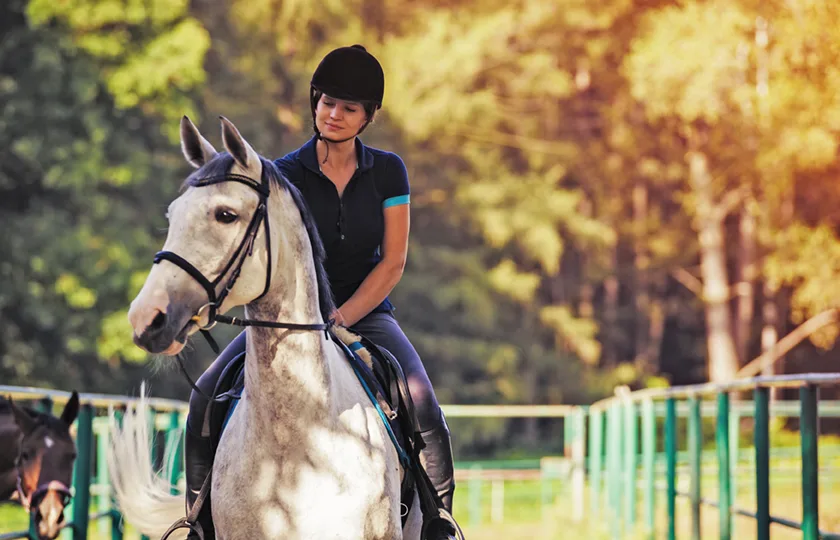
THE SERIES
Our goal with this series is to assist anyone who desires to become a qualified coach and riders who wish to understand how to ensure they are being taught by a qualified coach.
We will also be looking at what it means and what it takes to become an ‘expert equestrian coach’ according to the research available, and we hope to shed light on truly excellent coaching practices and inspire improvements in our industry!
If you are moving into the new year and looking for a coach, here are some important things to consider:
Is the coach qualified?
Qualifications provide the best way to objectively judge whether a coach has the knowledge and practical ability to coach their pupils safely and appropriately.
Does their level of expertise match my goals?
Some coaches work across the spectrum from beginner to professional, but not all have the skill, ability, or desire to do so. In a recent study in South Africa, only 25% of coaches indicated that they coach all levels of the sport.
Consider your riding goals and ensure you choose a coach to help you achieve them (or at least to give you the best chance of meeting them). The same South African survey found that 20% of coaches do not coach above the ‘novice’ level. If your aspirations are greater and you want a long-term relationship with your coach, perhaps consider this before starting.
Does their style of teaching suit me?
We do not all learn the same way, so it is important to find a coach that is ‘in tune with you’. Confidence is often a key issue, so ensure you have a coach who can work with your (and your horse’s) confidence level and bring out the best in you.
Does their lesson format suit me?
Consider the coach’s lesson format. Do they do mostly group lessons? Do you think you would do well in that setting? Or are they entirely private lessons and would this suit your learning style?
Are they qualified in first aid?
Do they have police clearance and are they qualified in safeguarding?
As previously mentioned, equestrian sport is dangerous. Ensuring that your coach has a First Aid qualification could go a long way toward ensuring that any injury you might sustain is handled appropriately. This element alone could be the difference between a positive and negative outcome following a fall.
Safeguarding puts measures in place that protect against abuse for all children and adults, ensuring they have enjoyable experiences around horses. Police clearance is a key element of safeguarding assessments.
Do their professional values match your own?
At the end of the day, you are entering into a supplier/consumer relationship. Does the prospective coach understand that they are providing a service and act accordingly and professionally? You need to decide if you are happy with your coach's professionalism.
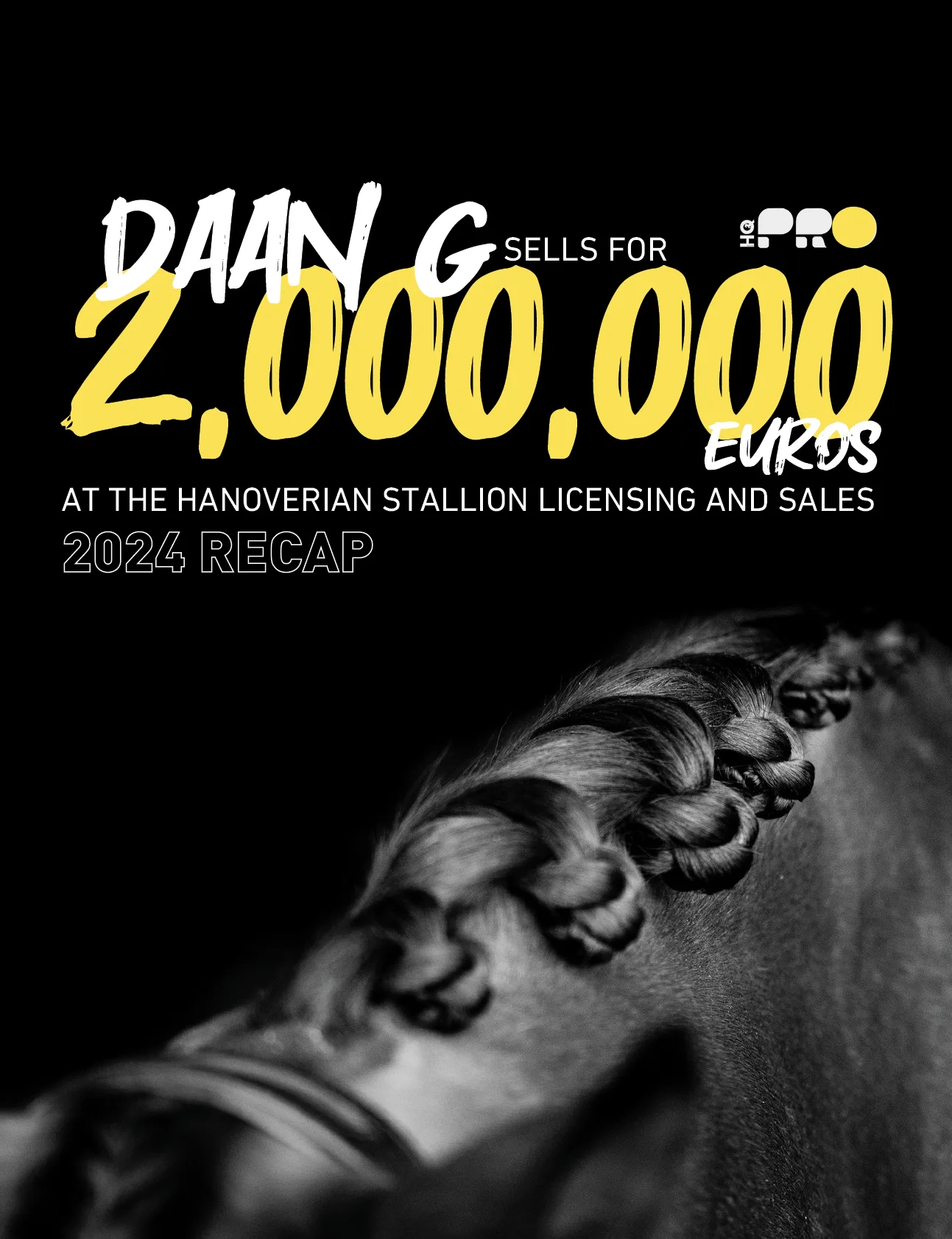
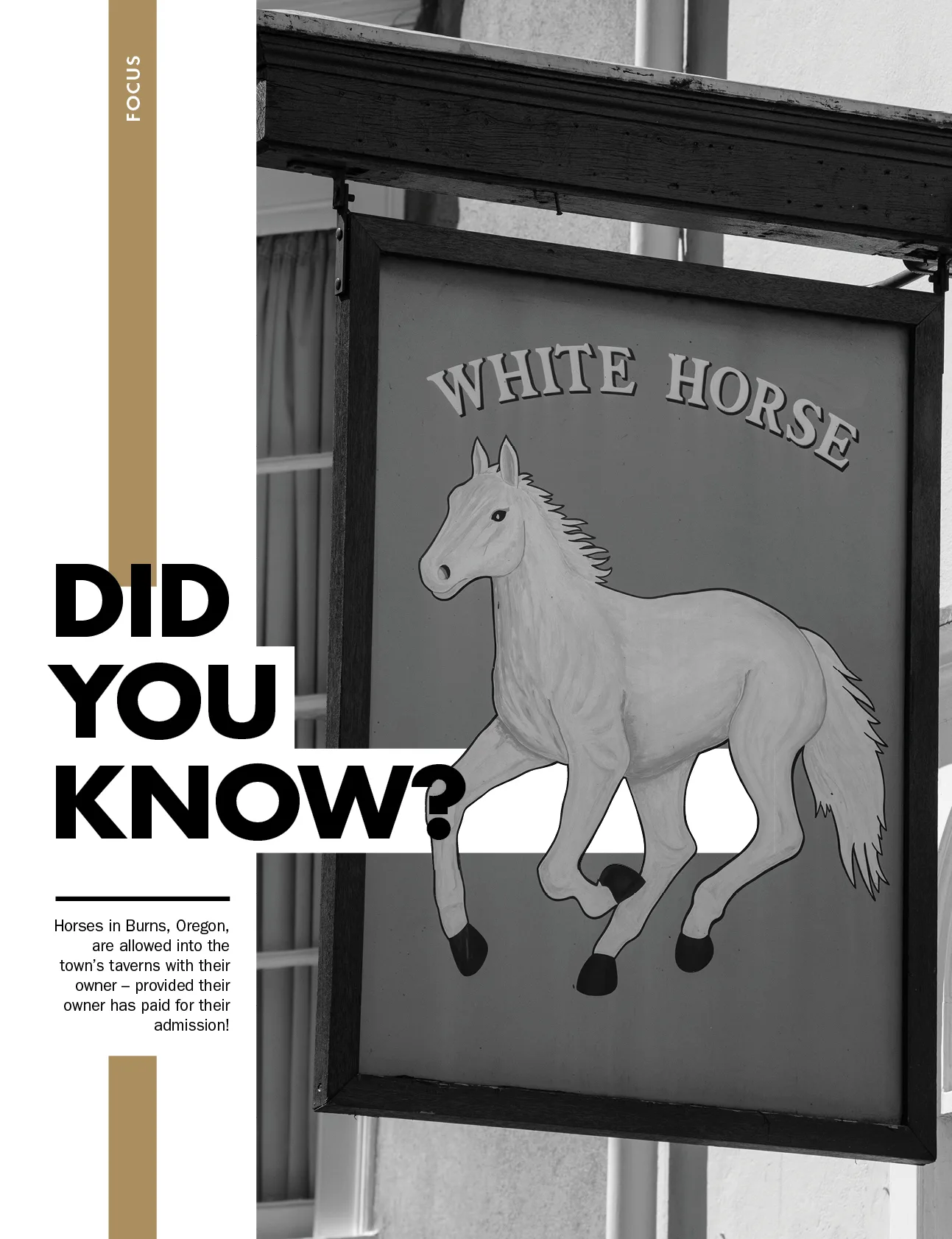
PHOTOGRAPHY: Amelia Campbell-Horne
As most of us know, it takes an army of staff, volunteers and officials to ensure the smooth running of an equestrian event. Through this series, we hope to shed some light on the important roles that these individuals play in making equestrian competition possible in Southern Africa.
Stay tuned for some interesting interviews and an in-depth understanding of these roles, the required qualifications and experience, and how to become an official in the sport.
Over the coming months, we will interview show organisers, course designers, judges, stewards, technical delegates, and other support staff to hear their stories and learn about their roles in our sport.
As an introduction to the series, we wanted to share the significant rule updates for 2025 according to the FEI. These rules provide the basis for the work of our officials here in South Africa and help govern sport internationally.
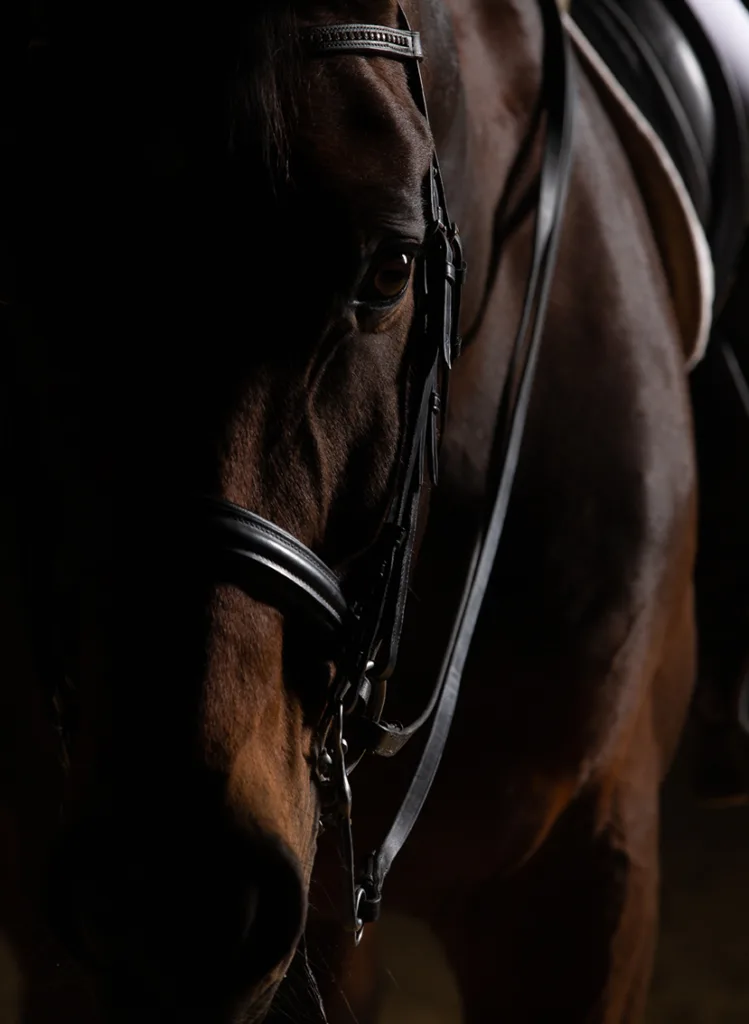
KNOW YOUR RULES
Here are some key changes to the FEI Regulations for 2025, following the FEI General Assembly held in Abu Dhabi in November 2024.
FEI GENERAL REGULATIONS
Changes to General Regulations include those made to:
1. Article 142: “Any person witnessing an Abuse must report it without delay. If an Abuse is witnessed during or in direct connection with an Event, it should be reported as a Protest (Article 161) to an Official. If the Abuse is witnessed at any other time, it should be reported to the FEI through the FEI Horse Abuse Reporting Form available on inside.fei.org who, following a review of the report, shall take a decision as to whether or not to open disciplinary proceedings (either through the Administrative Disciplinary Procedure or by referring the matter to the FEI Tribunal).” This change redefines the role of the responsibility to report horse abuse with the new FEI Horse Abuse Reporting Form, which is available on the FEI website.

2. Article 164: Fraudulent conduct was previously added as a reason to disqualify under Article 164, but the list of offences that the FEI may sanction has been detailed further for 2025. Among these offences is now any conduct that is contrary to the integrity of equestrian sport, or that risks bringing the FEI and/or equestrian sport into disrepute or that risks causing the public opinion of the FEI and/or equestrian sport to be diminished, as well as breaches of the FEI Social Media Policy. This has led to the table of sanctions under this article being updated accordingly, with violations of the FEI Social Media Policy resulting in sanctions such as warning cards, fines, disqualifications, as well as suspensions within a range of three months to three to five years, while breaches of the FEI Code of Ethics, the FEI Code of Conduct on the Welfare of the Horse, as well as bringing the FEI and/or equestrian sport into disrepute can carry sanctions up to a maximum of a lifetime ban.
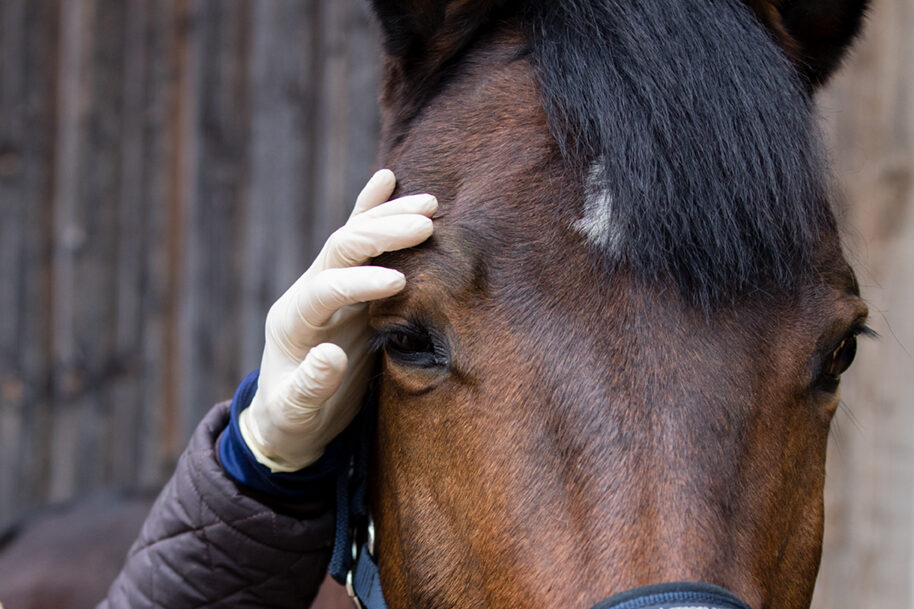
FEI VETERINARY REGULATIONS
There are a multitude of significant changes to the veterinary regulations for 2025. These include changes to:
1. Article 1004: This now prohibits removing or shortening hairs in the ears unless individual hairs have been removed by a veterinarian to prevent pain and discomfort for the horse. Clipping of these sensory hairs will result in disqualification from the event.
2. Article 1026: This Article refers to the prevention of infectious disease transmission and now allows the FEI to impose pre-event quarantine and or require testing for infectious diseases in certain instances where cases have been reported
3. Article 1035: If you compete a horse barefoot and need to present a horse for inspection, take note! If you jump barefoot, you will have to trot up barefoot. If you compete barefoot with hoof boots (allowed in jumping, eventing, vaulting and endurance), you must present the horse in the hoof boots you compete in. The inspectors can request the boots be removed to inspect the hooves. Failure to comply will result in the horse not being accepted to compete.

4. Article 1044: Refers to the often-debated nose-band tightness issue. It states that measuring must now be done using the FEI-approved measuring device. This rule applies to all nose-band types and both upper and lower nosebands.
5. Article 1045: This article previously allowed stewards and official veterinarians to check any part of the horses’ legs, boots and tack at any time during the event. This Article has now been extended to allow stewards and official vets to examine the horse’s whole body and to check for the presence of blood.
6. Article 1061: Additions have been made to this article whereby horses are now prohibited from competing If they are administered an injection or infusion of vitamins and or minerals during the period of an FEI event, unless in the event of an emergency, where a veterinary form must support their use.
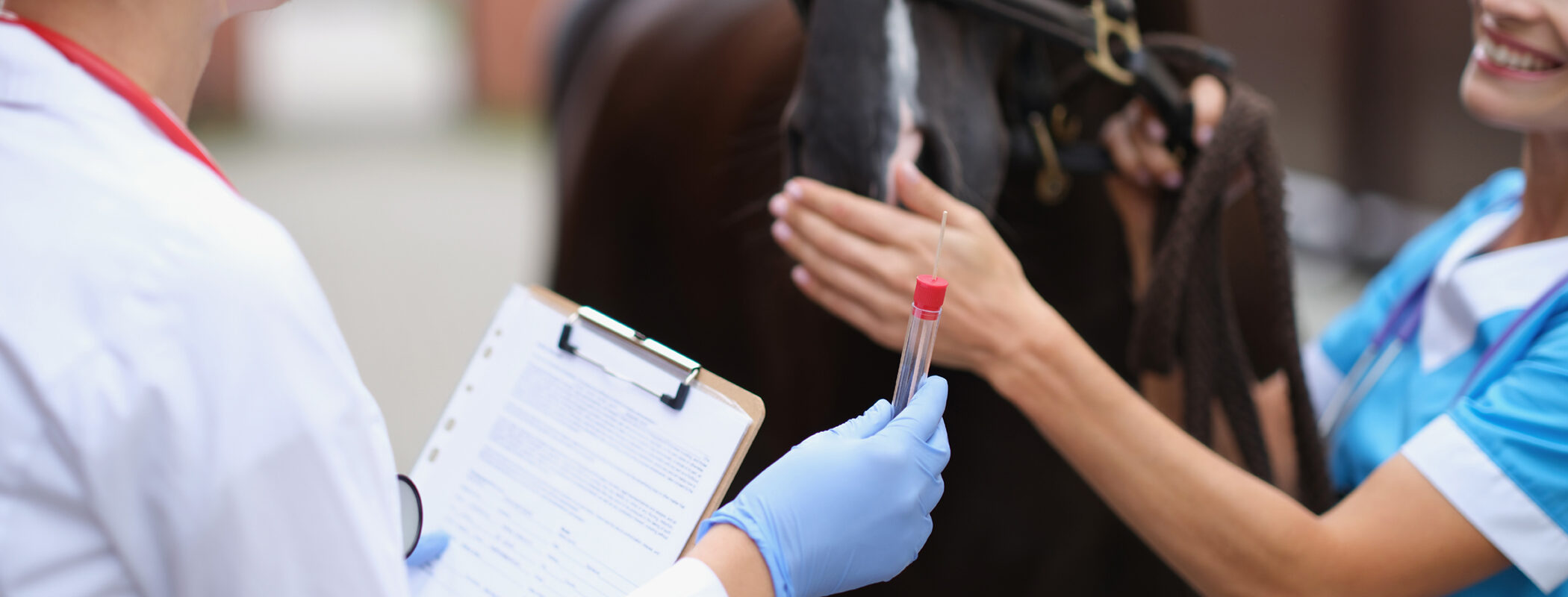
FEI EQUINE ANTI-DOPING AND CONTROLLED MEDICATION REGULATIONS
This past year (2024), these regulations went through a complete revision as per the FEI Rules Policy. These are the changes that have come into effect:
1. Article 2: Equine Anti-Doping Rule violations in the past were established by an adverse analytical finding in a positive blood or urine sample. This has now been extended to include “any biological or other material, including any tissue, body fluid, excreta, hair, skin scraping or swab” sample. Furthermore, three missed tests or failings to file the whereabouts of a horse within a 12-month period will result in an EAD rule violation. This aligns with the regulation that the registered trainer/owner or person responsible for any horse in the FEI registered testing pool must notify the FEI quarterly of the horse’s whereabouts and ensure the horse is available for testing.

2. Article 5: ‘Testing’ now includes a section on the FEI’s entitlement to request information on a horse’s whereabouts to conduct ‘out of competition’ testing. In out-of-competition testing, the finding of a banned substance will lead to the provisional suspension of a horse for a two-month period, which can be increased if there are exceptional circumstances. Suspensions of people will also be possible in some cases.
DID YOU KNOW?
“Prohibited substances that are used out-of-competition will not always be detected in an athlete's sample if the athlete is tested in-competition. For this reason, out-of-competition testing is a necessary part of an anti-doping programme.” That is why Art.5.1 states: “All Horses registered with the FEI or a National Federation shall be subject to Out-of-Competition Testing by the FEI.”
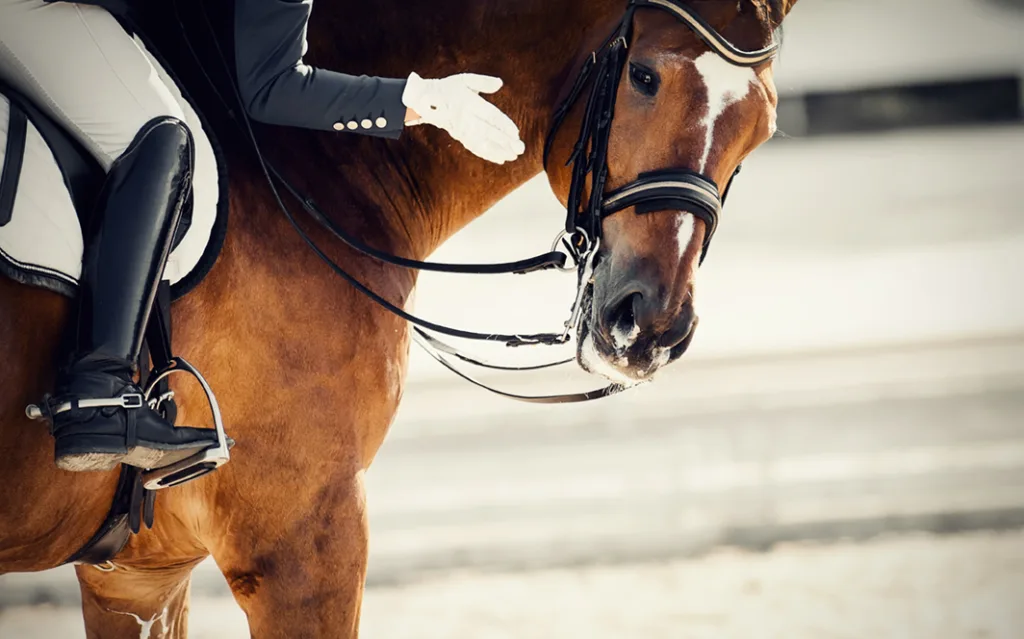
FEI EQUINE PROHIBITED SUBSTANCES LIST (EPSL)
The FEI EPSL will be evaluated during the 2025 annual review process. Individuals can submit suggested changes to the list through the FEI Website before the 1st of February by completing a form.
The new EPSL is published on the Clean Sport website 90 days before it becomes effective, usually on 1 January each year.
UNDERSTANDING 'BANNED SUBSTANCES' VS 'CONTROLLED MEDICATIONS'?
• 'Banned substances' are substances that are deemed by the FEI to have no legitimate use in the competition horse and/or have a high potential for abuse. They are not permitted for use in the competition horse at any time.
• 'Controlled medications' are substances deemed by the FEI to have therapeutic value and/or be commonly used in equine medicine. Controlled medications have the potential to affect performance and/or be a welfare risk to the horse.
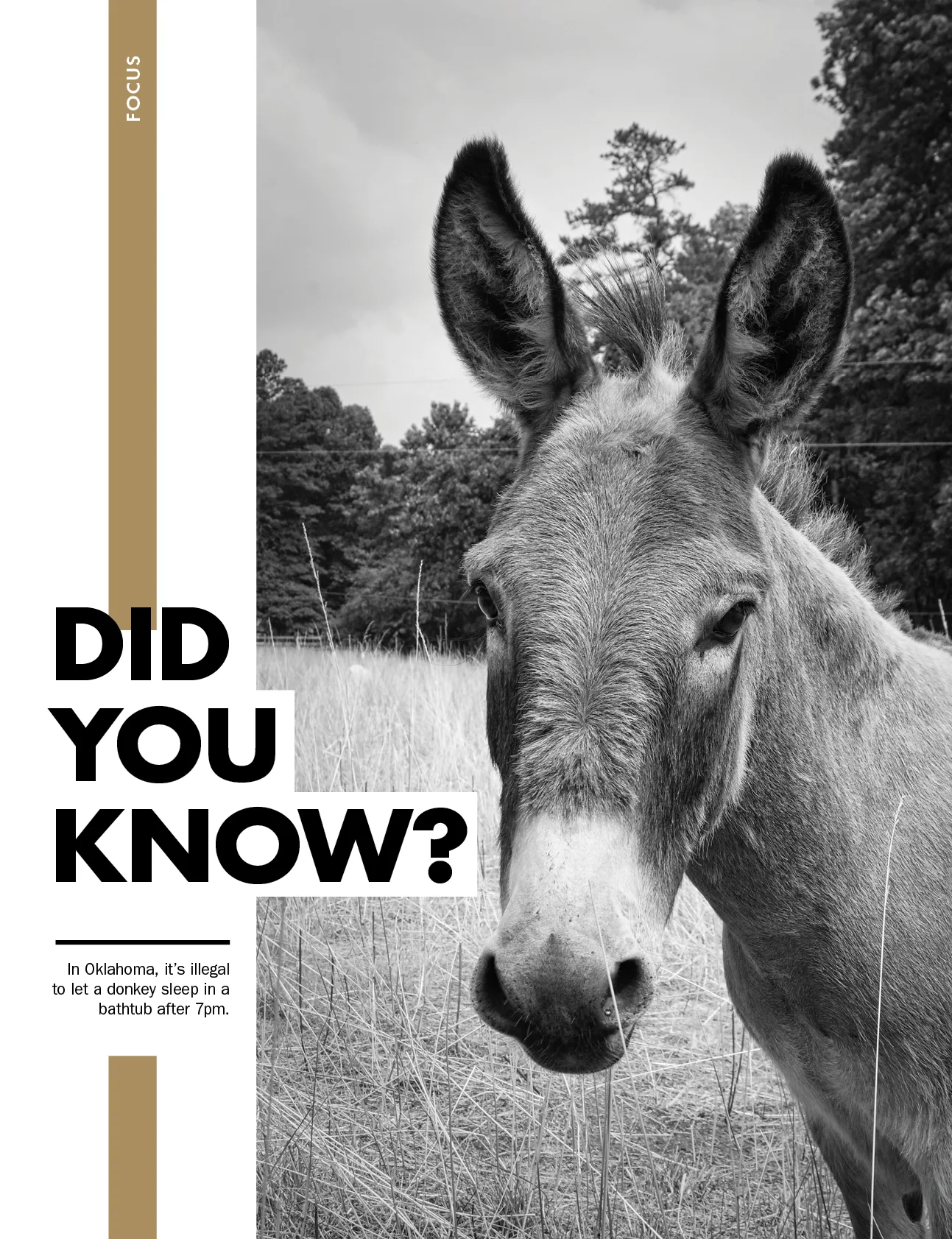
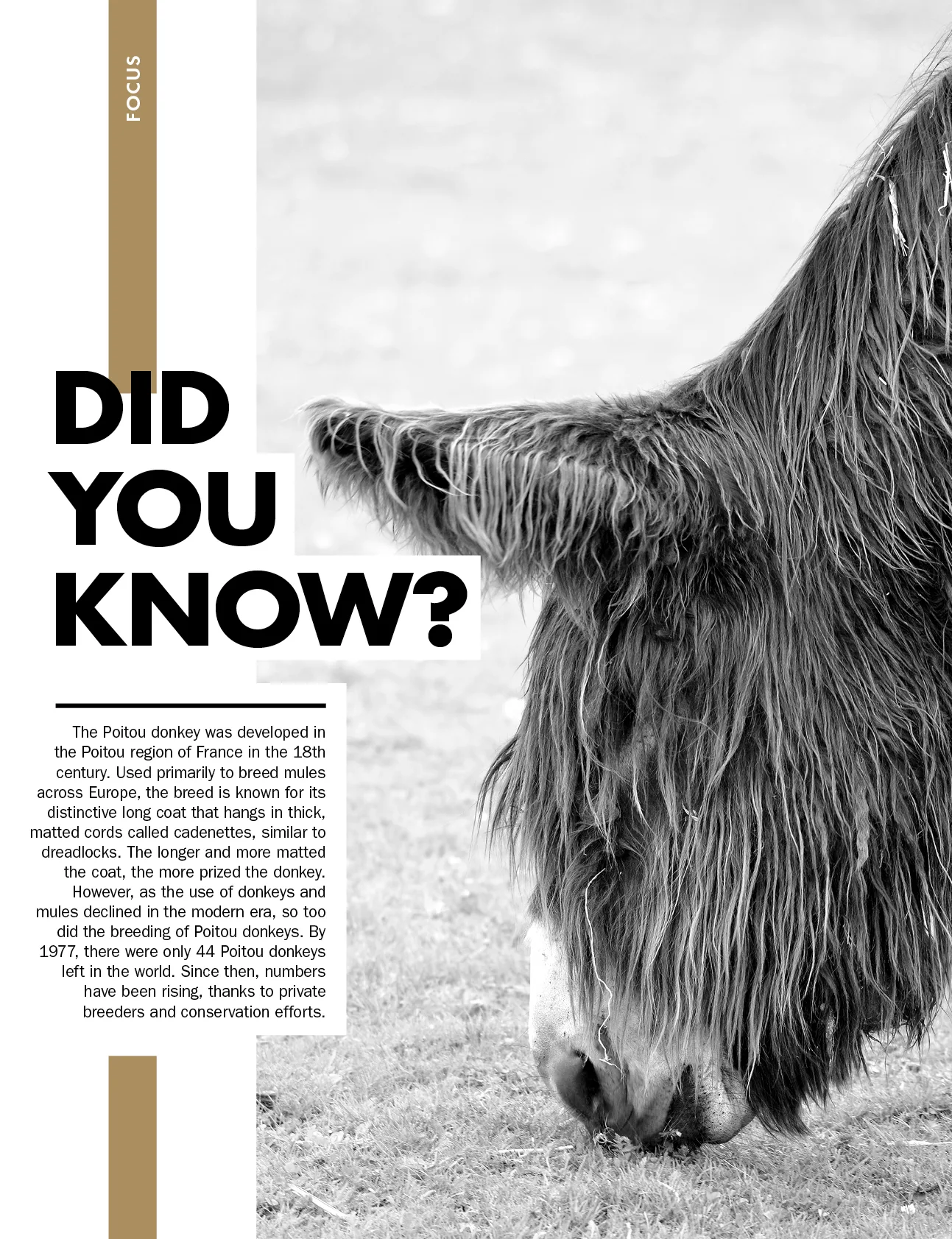
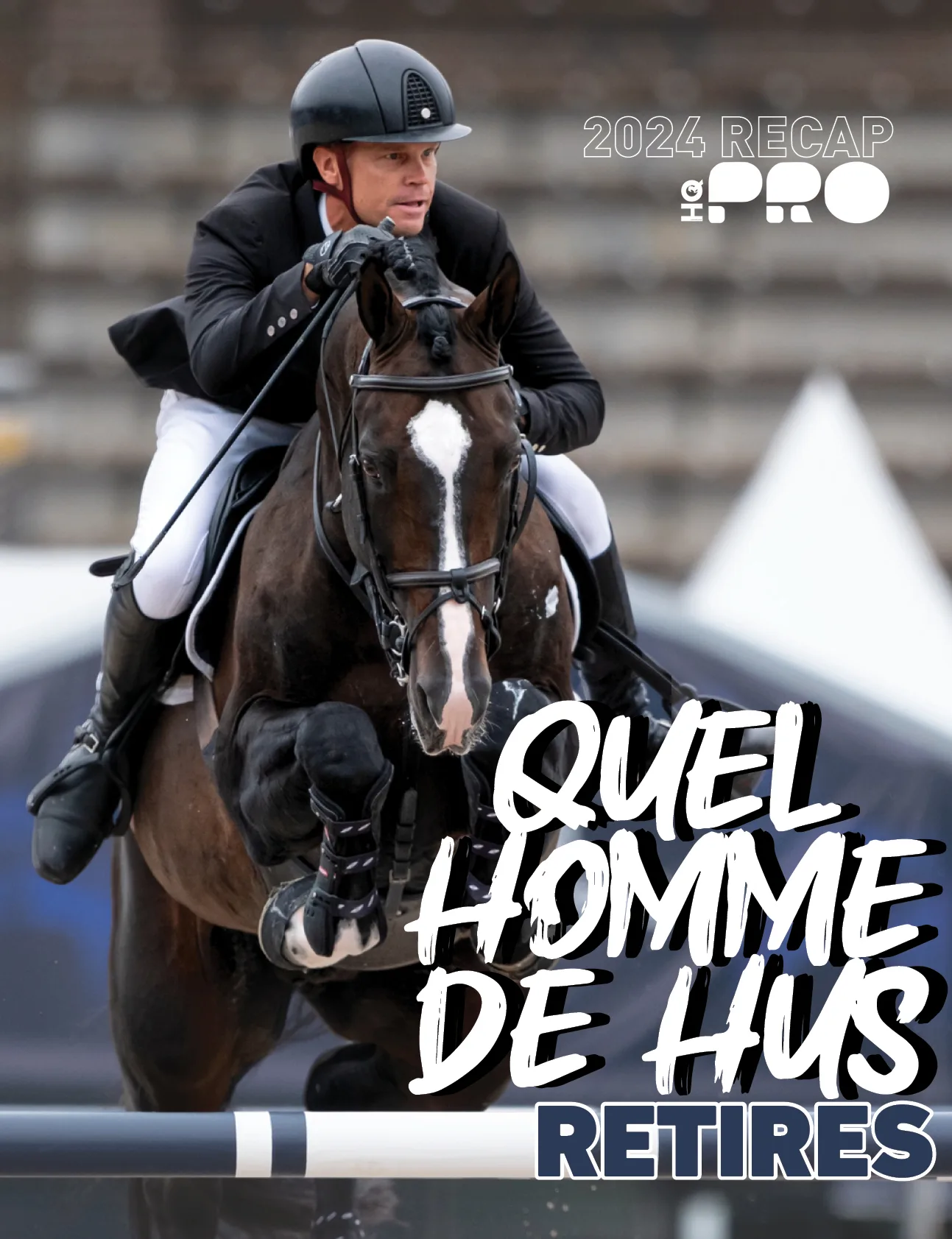
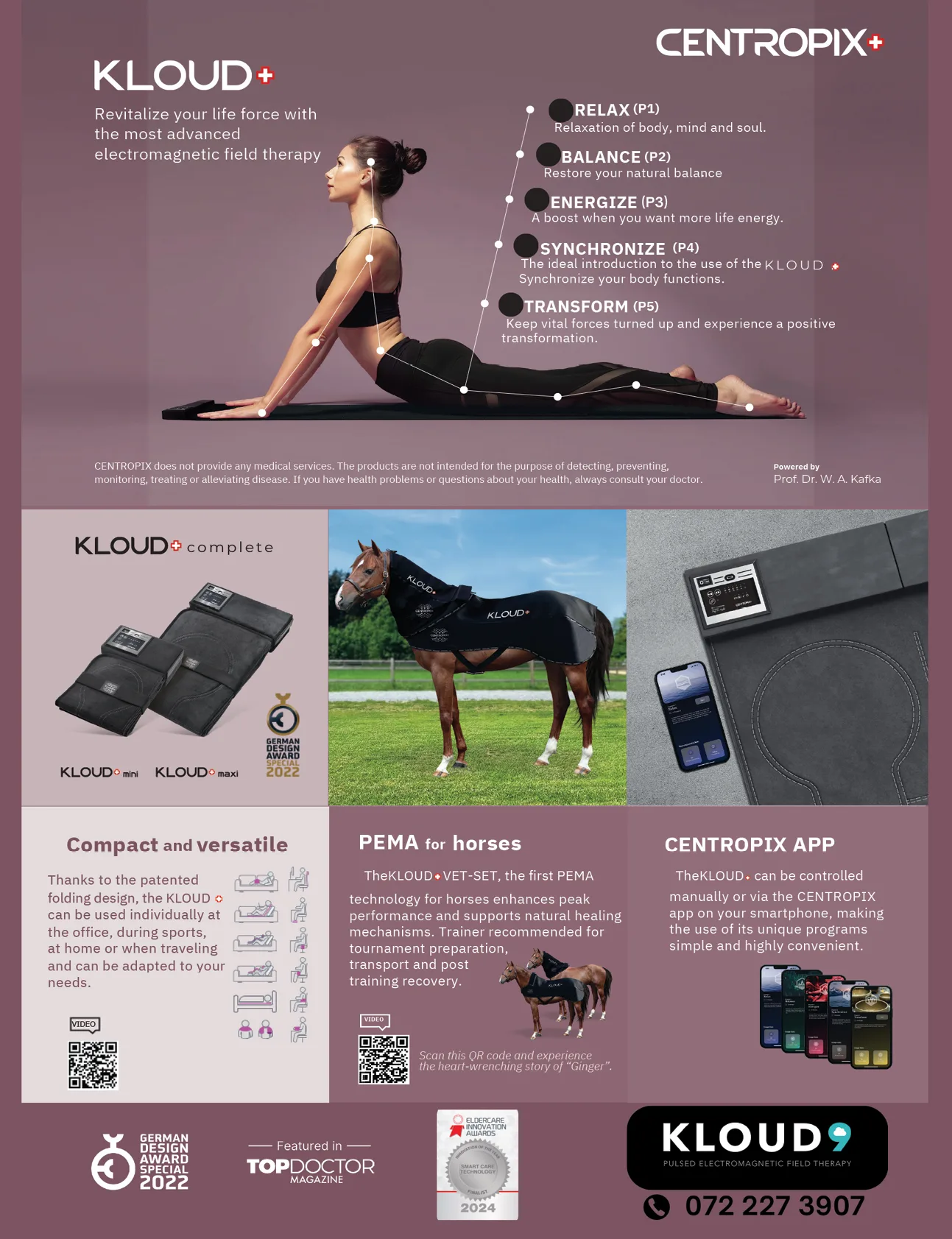
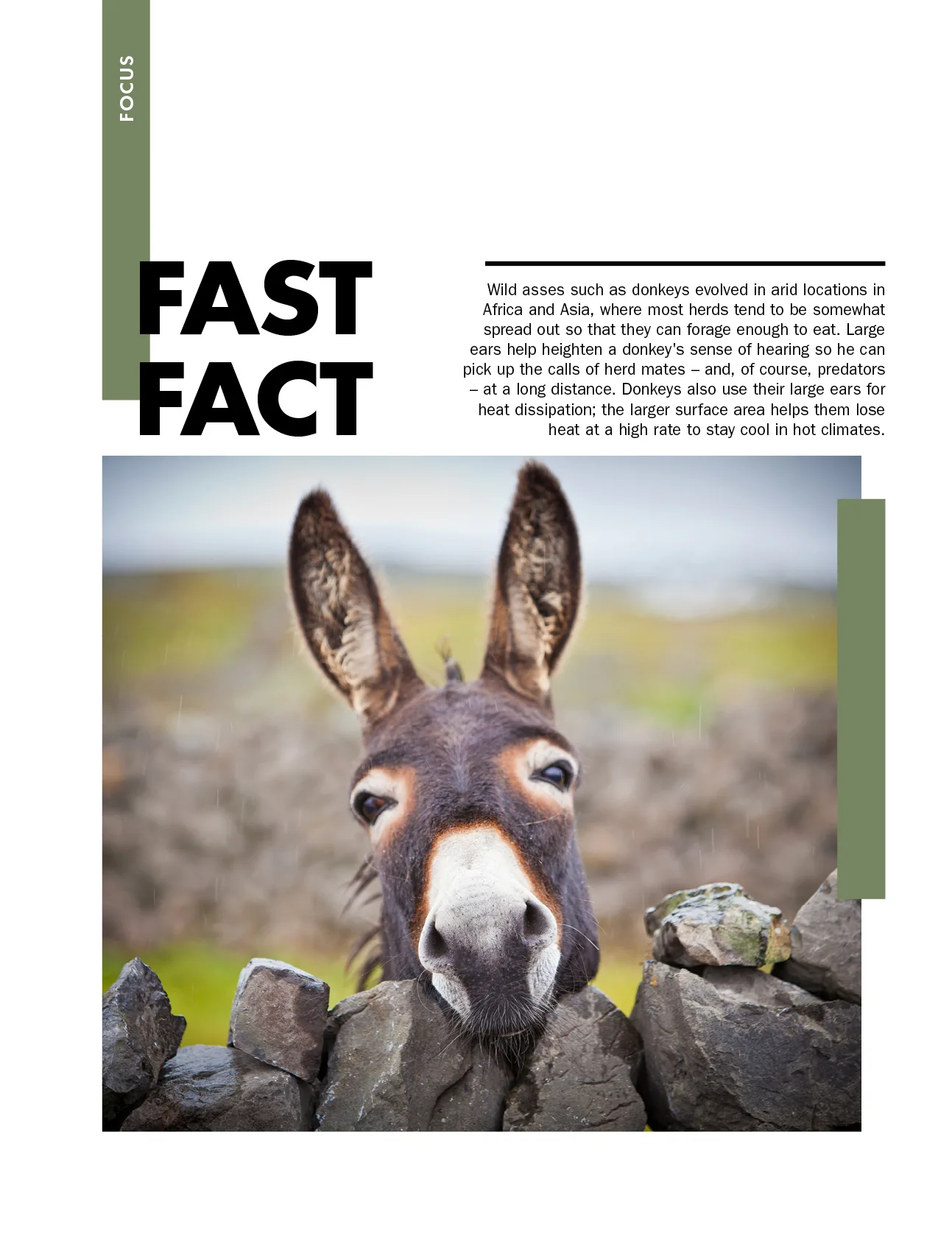
Text: Andrea von Holdt
We all know the saying ‘New Year, New You’, and with the onset of a New Year, we thought we would set some New Year’s resolutions for ourselves, one of which is to be fitter for ourselves and our horses!
With this in mind, we chatted with Andrea von Holdt, owner of Fit 2 Ride, a Kyalami-based personal training operation that caters to professional and amateur riders alike.
THE IMPORTANCE OF RIDER FITNESS
Horse riding is a very specific and unique sport in which the rider's physical ability affects their balance, coordination and reactions in the saddle, and, ultimately, the quality of their riding. Riders, therefore, need to ensure that they are ‘fit’ enough to meet the demands of their equestrian activities.
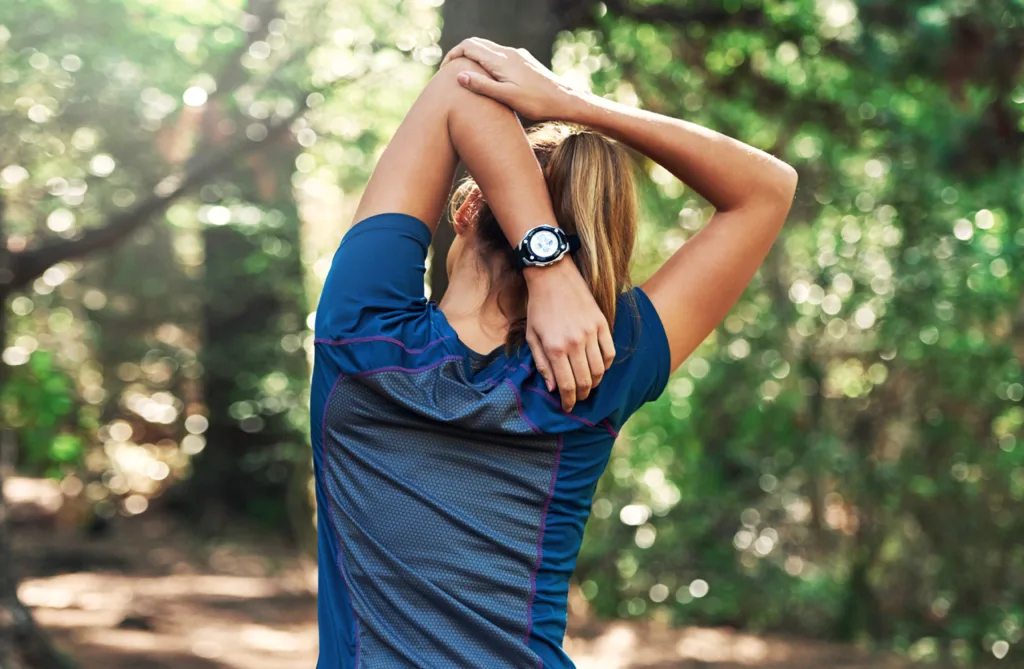

Research has proven that asynchronous movement and poor body position can have a negative physical impact on the horse through injury to the muscles and ligaments under the saddle and/or strain on the spine as the horse attempts to compensate for the unbalanced forces exerted upon it by the rider (Rider impacts on equitation by Jane Williams and Gillian Tabor, 2017). This further emphasises the importance of rider fitness in keeping our horses healthy and happy.
WHAT IS HORSE RIDER FITNESS TRAINING?
Specific horse rider fitness training focuses on building the specific strength, mobility, and mental focus required for equestrian sports, making it distinct from general fitness programmes. Key elements that require focus on as part of rider-specific fitness training include:
1. Core strength and stability
Riding demands a strong, stable core to maintain balance, posture, and mobility in the saddle. Core strength enables riders to sit evenly, absorb the horse's movements, and stay centred during sudden shifts.
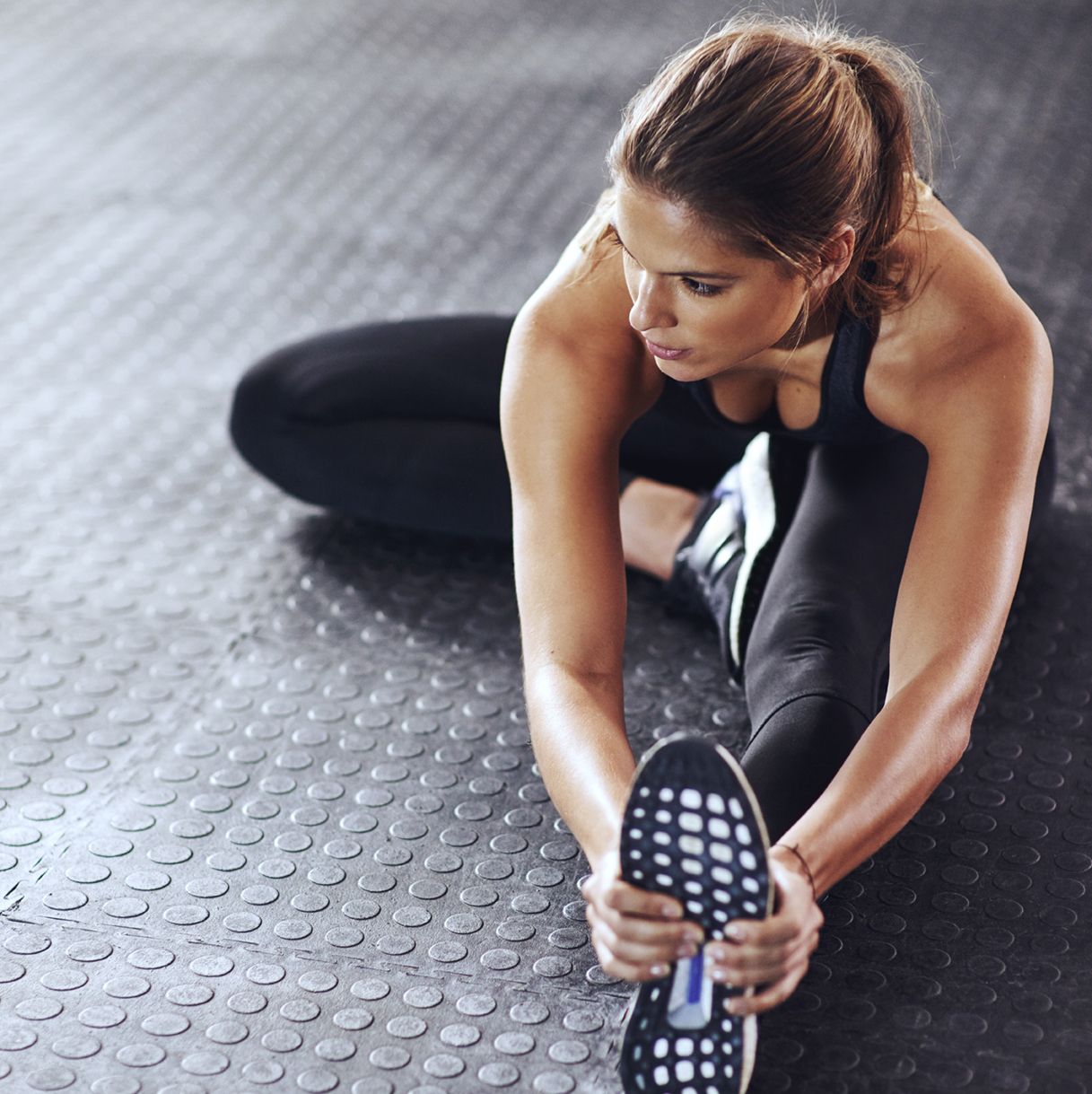
2. Leg strength and hip mobility
Riders rely heavily on leg strength to maintain proper position, provide subtle cues, and secure their seat. Hip mobility is equally essential for adapting to the horse's gait and transitions.
3. Balance and coordination
Maintaining balance while riding is crucial, as the horse moves dynamically. Riders need to develop coordination to stay in harmony with their horse's movements.
4. Flexibility and mobility
Flexibility ensures riders can move fluidly and adapt to a horse’s stride. Tightness in key areas, such as the hips, hamstrings, or lower back, can hinder effective riding.
5. Endurance and cardiovascular fitness
Riding involves prolonged periods of engagement, whether in competitive settings or casual rides. Both muscular and cardiovascular endurance are essential for maintaining focus and control.
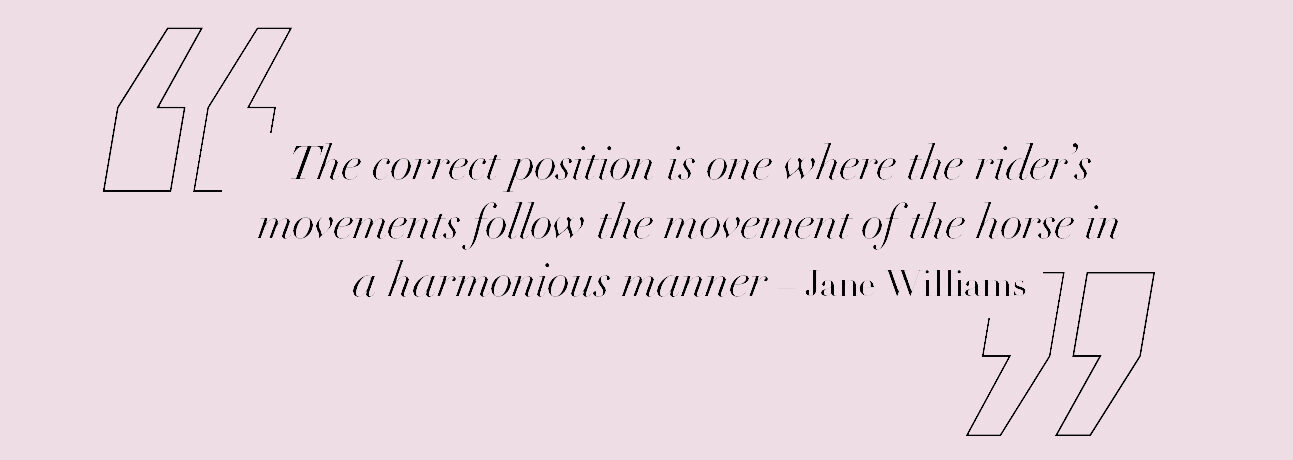
6. Injury prevention
Horse riding poses unique physical challenges that can lead to overuse injuries, sprains, or falls. Strengthening stabilising muscles, improving flexibility, and incorporating functional movements tailored to equestrian demands help reduce injury risks. Regular fitness training also supports quicker recovery after riding-related fatigue or strain. Riding well is not only required for effectiveness and, therefore, performance outcome, but the basic position must be secure to prevent falls and subsequent injuries.
7. Effective horse communication
A rider’s body is the primary tool for communicating with a horse. Precise, subtle cues are more effective when the rider’s body is strong, mobile, and responsive. Fitness routines that improve muscle control and symmetry ensure that commands are clear and consistent.
8. Mental focus and confidence
Fitness training builds physical capabilities and boosts mental resilience. A well-conditioned body fosters confidence in the rider's ability to handle challenges, enhancing focus during rides and competitions. Mind-body exercises like meditation or breathwork can complement physical training by improving mental clarity and composure.
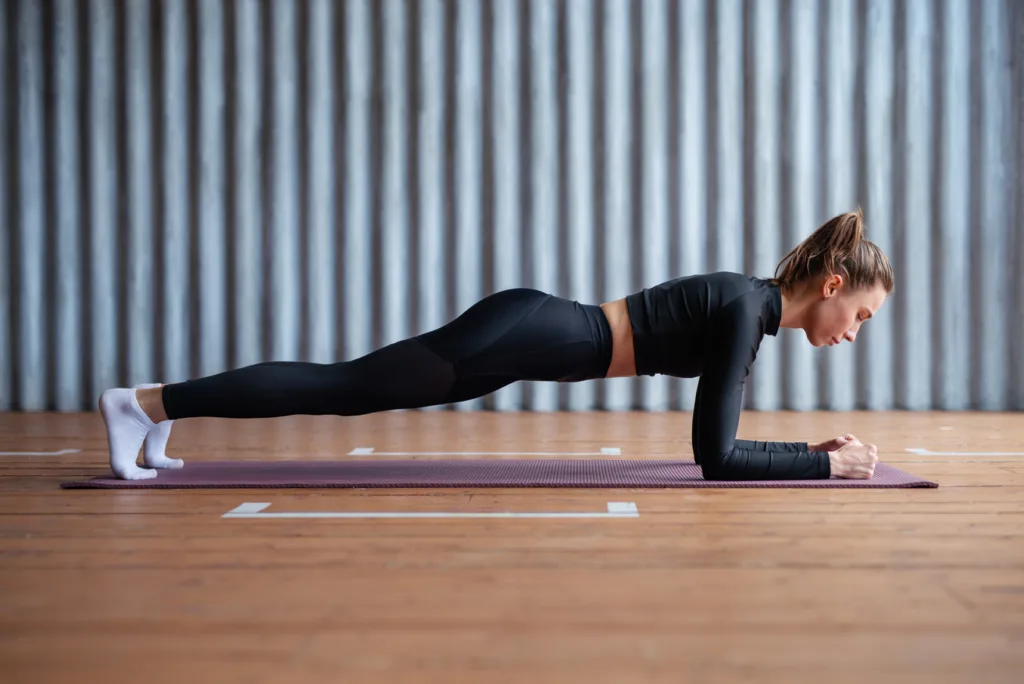
NOT JUST FOR PROFESSIONALS
Rider fitness training benefits equestrians and horses of all levels, from beginners to professionals. It supports personal goals, whether competitive or recreational, enhancing performance, safety, and enjoyment for rider and horse. For recreational riders, improved fitness enhances enjoyment, comfort, and safety during rides, while competitive riders can achieve the edge they need to perform at their best. Regardless of the riding discipline or skill level, a strong, flexible, and well-balanced body is the foundation for success and satisfaction in equestrian activities and, crucially, improves the health and performance of the equine athlete.
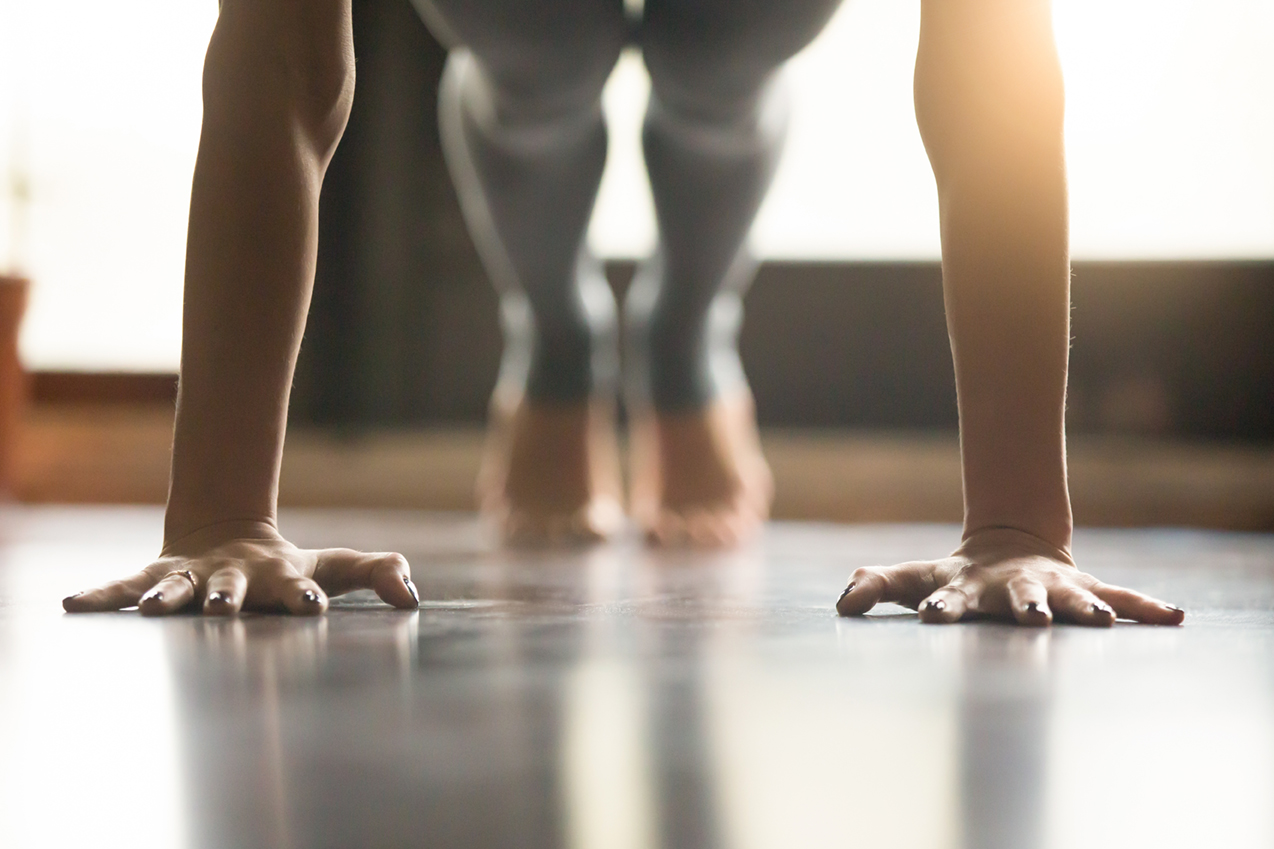
IMPROVING RIDER FITNESS
So, as part of the ‘New Year, New You’ movement, here are five simple exercises to get you started on your journey towards becoming a fitter, stronger and ultimately better rider:
1. Planks: Core stability is vital for balance and posture. Begin with basic planks, holding for 20-30 seconds, and progress to side or forearm planks to engage different parts of your core.
2. Squats: Squats strengthen the legs, glutes, core, and hips. Stand with feet shoulder-width apart and parallel. Lower your hips back and down, keeping knees aligned over toes, ideally until thighs are parallel to the ground. Push through your heels to stand, avoiding your knees collapsing inward. Perform 12-15 reps.
3. Hip/glute bridges: Strengthen your hips and glutes by lifting your hips off the floor while lying on your back with bent knees. Aim for three sets of 12-15 reps, and progress to single-leg bridges for added challenge.
4. The 90/90 hip drop: Sit on the floor with both knees bent at 90-degree angles. Position your feet slightly wider than hip-width apart. Gently rotate your hips to drop both knees to one side, then switch to the other side. Keep your torso upright and facing forward. For support, place your hands on the ground behind you or challenge your stability by sitting upright with your hands extended forward.
5. Cat-cow stretch: Maintain spinal flexibility and mobility with this simple stretch. Alternate between arching and rounding your back while on hands and knees for one to two minutes.

ADDITIONAL CONSIDERATIONS
Personalisation: Each rider’s training programme should be tailored to their current fitness level, injury history, riding goals, and specific equestrian discipline.
Professional guidance: Working with a fitness coach familiar with equestrian demands ensures that exercises are appropriate, balanced, and beneficial.
Cross-training benefits: Complementary activities like pilates, yoga, or swimming enhance functional strength and support muscle recovery.
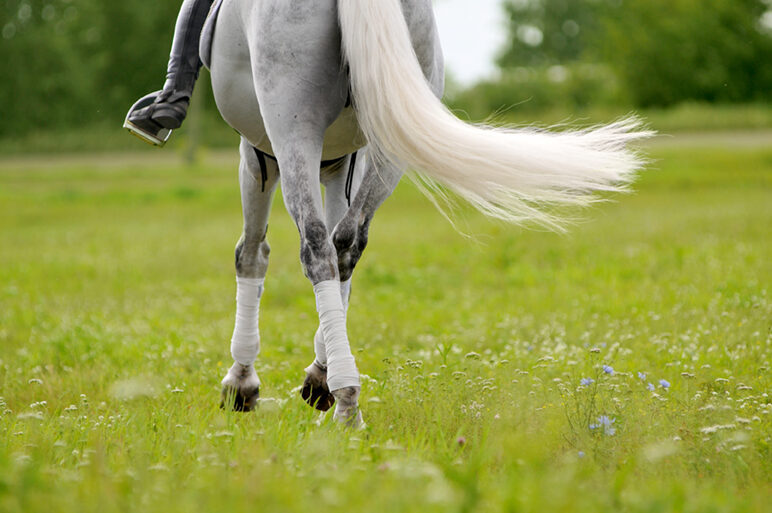
FINAL THOUGHTS
Rider fitness training is essential for developing the strength, flexibility, balance, and endurance needed to excel in equestrian sports. It not only boosts riding performance but also reduces the risk of injury and promotes harmony between rider and horse. By investing in a well-rounded fitness regime, riders can improve their overall well-being while enhancing their connection with their horses.
ANDREA VON HOLDT
Instagram: https://www.instagram.com/fit2_ride
Website: https://www.fit2ride.co.za
A bit about me
With over 25 years dedicated to the fitness training, gym, and wellness sector and a lifelong passion for horse riding, I've finally merged my love for equestrian and human movement.
My firm belief is that our horses should not be our workouts. Off-saddle work must complement our riding, and we can aim to mitigate our imbalances and weaknesses, never mind the ongoing strains and injuries caused by riding.
My background in human movement sciences and a spectrum of sports-specific qualifications have enabled me to own gyms, wellness centres, and personal training businesses. I have also raced triathlons locally and internationally and still love to run.
Therefore, with my experience, qualifications, understanding, and passion, I aim to assist you in improving so you can be your best for your horse-rider partnership.
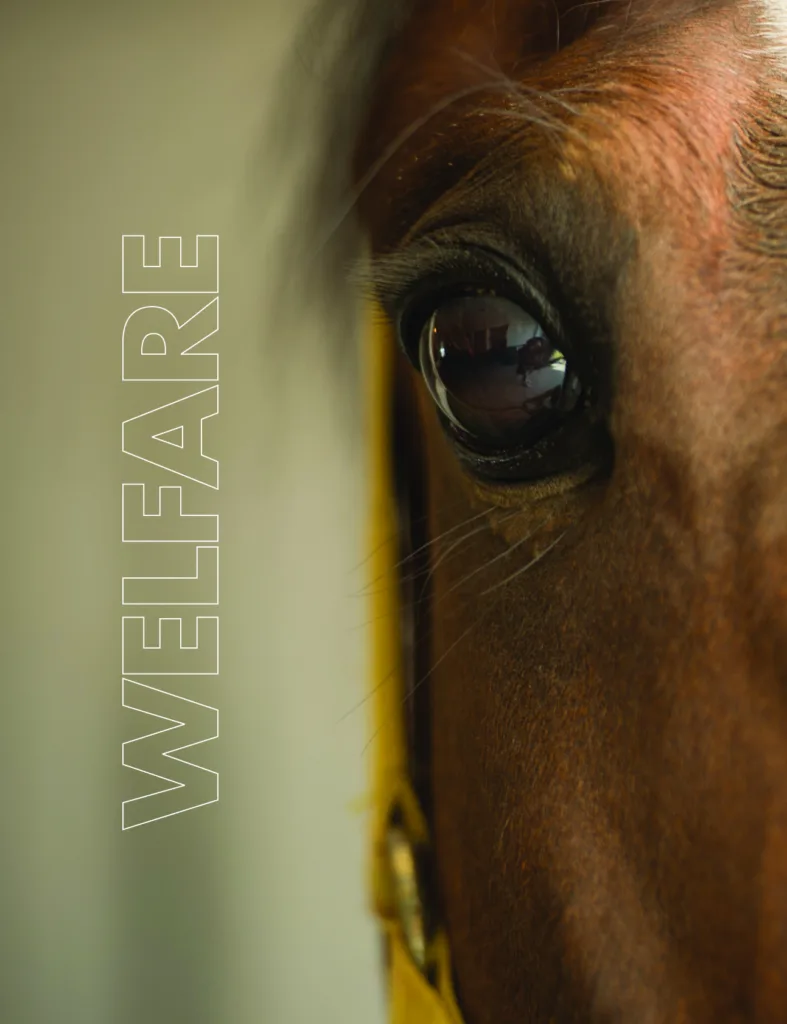
Text: Amelia Campbell-Horne
Another of our resolutions is raising awareness of the global hot topic of equine welfare. Equine welfare issues have received extensive news coverage on the international competitive scene, with elite-level dressage under the greatest scrutiny after Charlotte Dujardin’s video and Andreas Helgestrand’s ban following the Operation X Documentary.
We are under no illusion that infringements on horse welfare are unique to Europe, elite levels or one discipline, and the publicity and ‘social buzz’ around these recent events in Europe has raised important questions and concerns that need to be addressed by the global equestrian community. This brings us to consider ‘the Social License to Operate’ for equestrian sport.
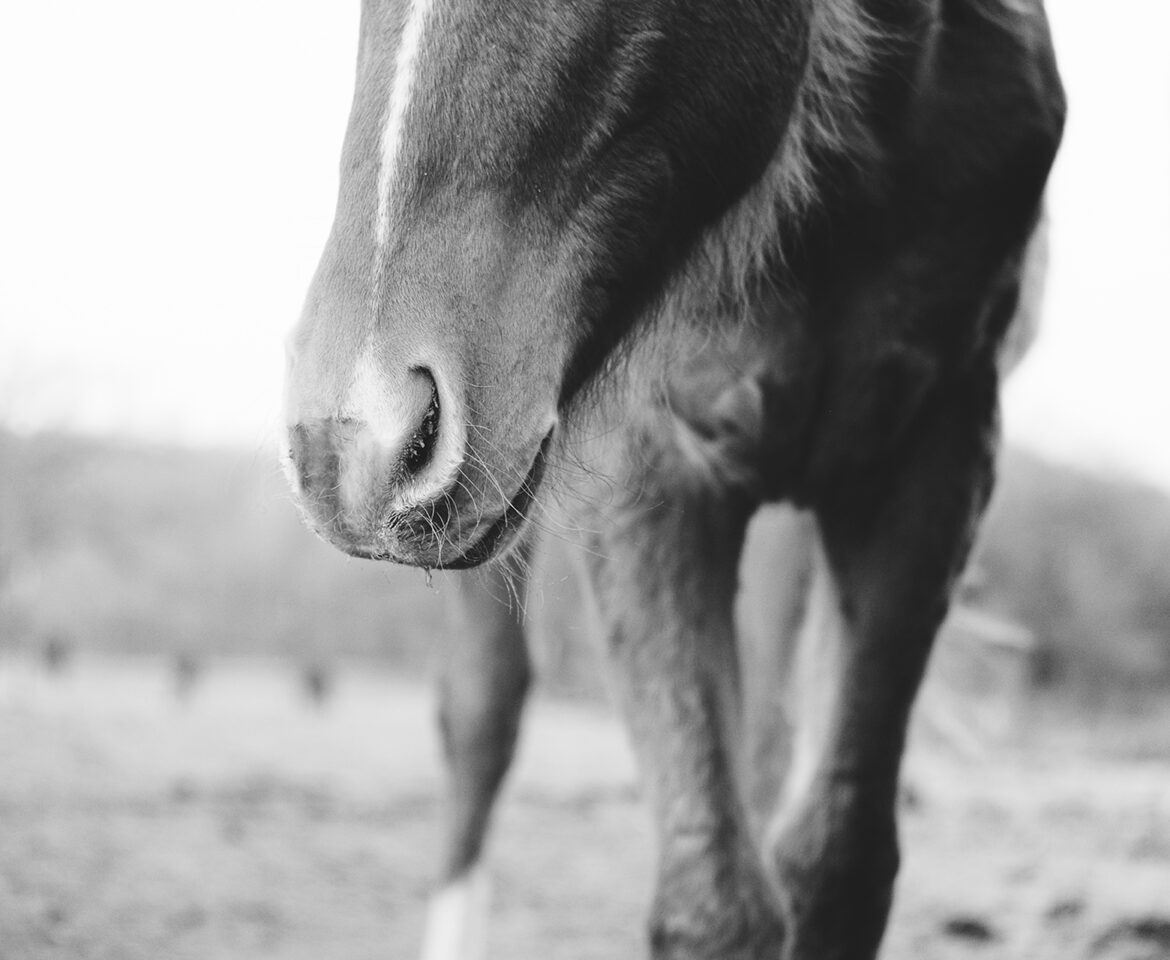
SLO
Social License to Operate (SLO) is a term that has become synonymous with the topic of ‘equine welfare’ and equestrian sport, especially in the Western world. From a business perspective, ‘SLO’ is a term used to describe the likelihood that an industry, company, or project will continue to receive support from the local community based on its environmental and social impact.
In relation to equestrianism currently, the public generally accepts the equine sport and the role of horses in it, which allows the industry to continue to function with few restrictions, so we currently have an SLO. However, if public opinion swings, this could result in legal restrictions for the sport (perhaps affecting certain disciplines more than others) and, in the worst-case scenario, result in a ban on equestrian sport.
DID YOU KNOW?
In 2023, a review of horse welfare literature (from 1980-2023) was conducted, which found that equine welfare research literature had grown exponentially in recent years, especially in Europe, with most studies focused on equine pain, stress and equitation. However, there are still significant gaps in equine welfare research.
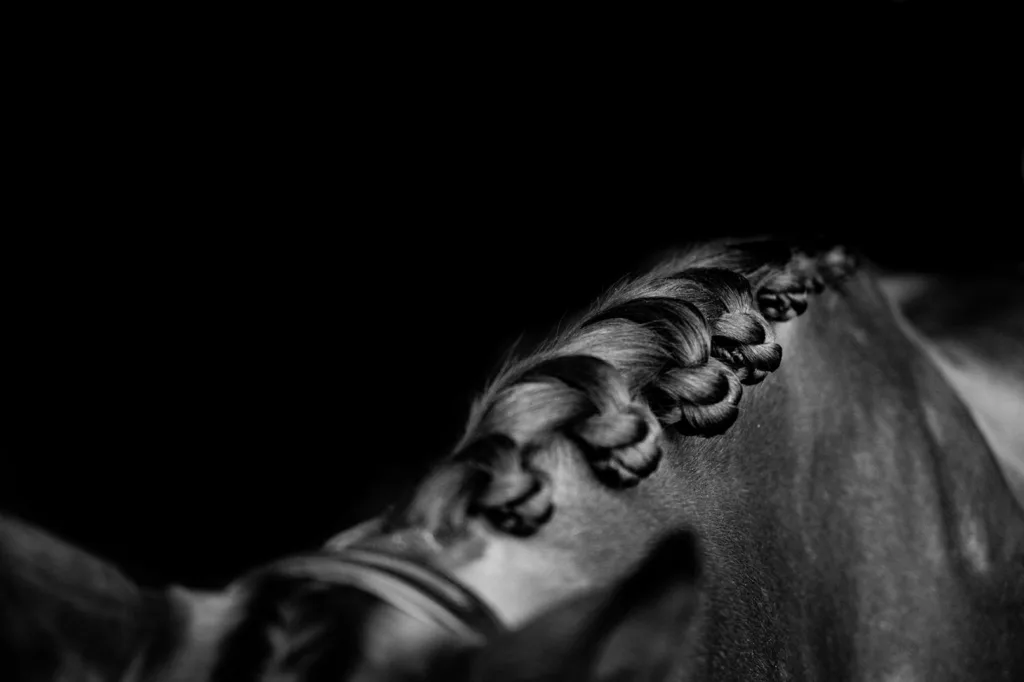
Due to the recent negative publicity, the high-risk nature of our sport, and the changing societal views on using animals for entertainment, the equestrian SLO is under increasing scrutiny.
As a result, the equine industry needs to be proactive in prioritising animal welfare, communicating transparently with the public, and educating those involved in the sport and the general public through evidence-based research.
Various equine sporting bodies, national bodies, and federations have taken a proactive stance and are implementing an array of tactics to ensure that we can maintain our SLO. The FEI, in 2022, appointed an Equine Ethics and Wellbeing Commission that was ‘was tasked with addressing societal concerns about the use of horses in sport and creating a blueprint to future-proof equestrian sports, as well as providing independent advice and recommendations to the FEI to ensure equine welfare is safeguarded through ethical, evidence-based policy and practices.’
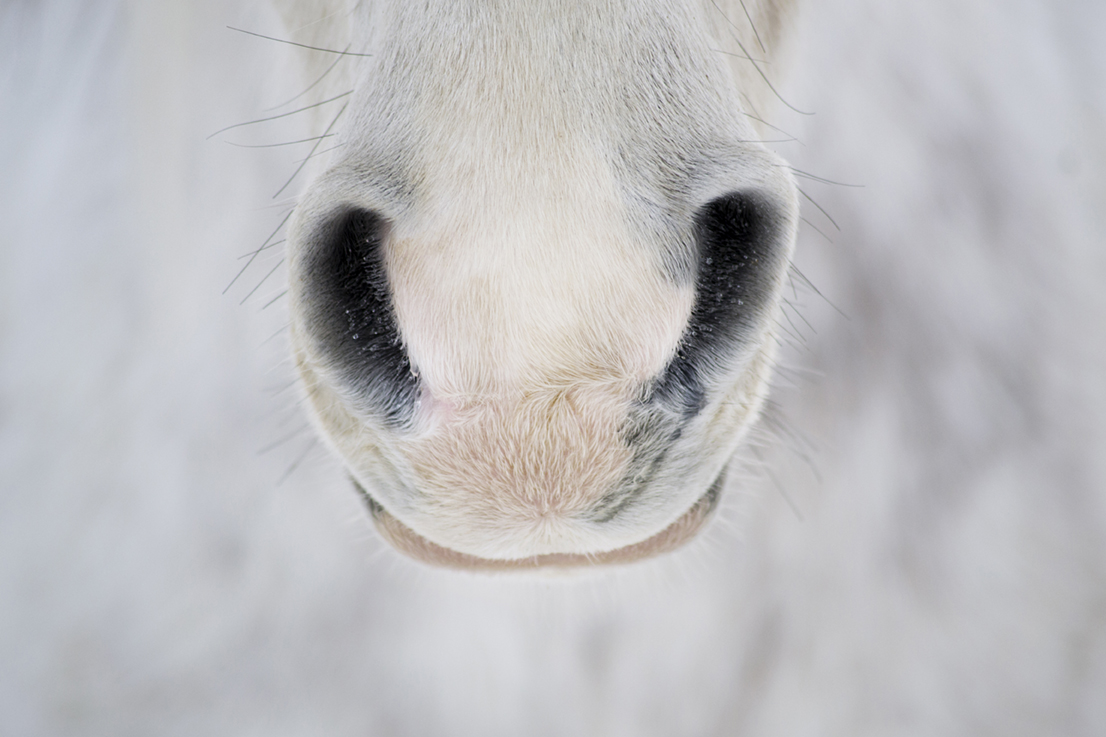
E-BARQ
With regards to the SLO, equitation-based research is a key focus, and the University of Sydney (Australia) has recently developed The Equine Behaviour Assessment and Research Questionnaire (E-BARQ). The E-BARQ aims to gather data from around the world on the ‘domestic equine triad of training, management and behaviour’, thereby investigating how training and management affect behaviour and, ultimately, equine welfare.
The data collected has already resulted in a plethora of published evidence-based research on topics such as whether the sex of the handler has an impact on horse behaviour, whether the number of different riders affects a horse’s responsiveness and whether certain in-hand behaviours can be predictors for dangerous behaviours under-saddle (people backing horses take note!).
DID YOU KNOW?
The E-BARQ has been scrutinised by various expert researchers (*2), and found to be a valid and reliable standardised behavioural assessment tool for horses.

As a not-for-profit citizen science project, the E-BARQ gathers information for research purposes and provides various opportunities for individuals who own or handle horses to educate themselves about their practices and equine interactions.
The questionnaire can be completed by any horse owner or handler, regardless of their horse’s age, breed, size and use. All you need to do is create a profile on https://e-barq.com/ and fill in the questionnaire for each of your horses.
DID YOU KNOW?
Horses ridden or handled by males were found in the research to be more likely to be difficult to catch and defensive when approached but less likely to pull on the reins/brace the neck, or toss their head. (*3)
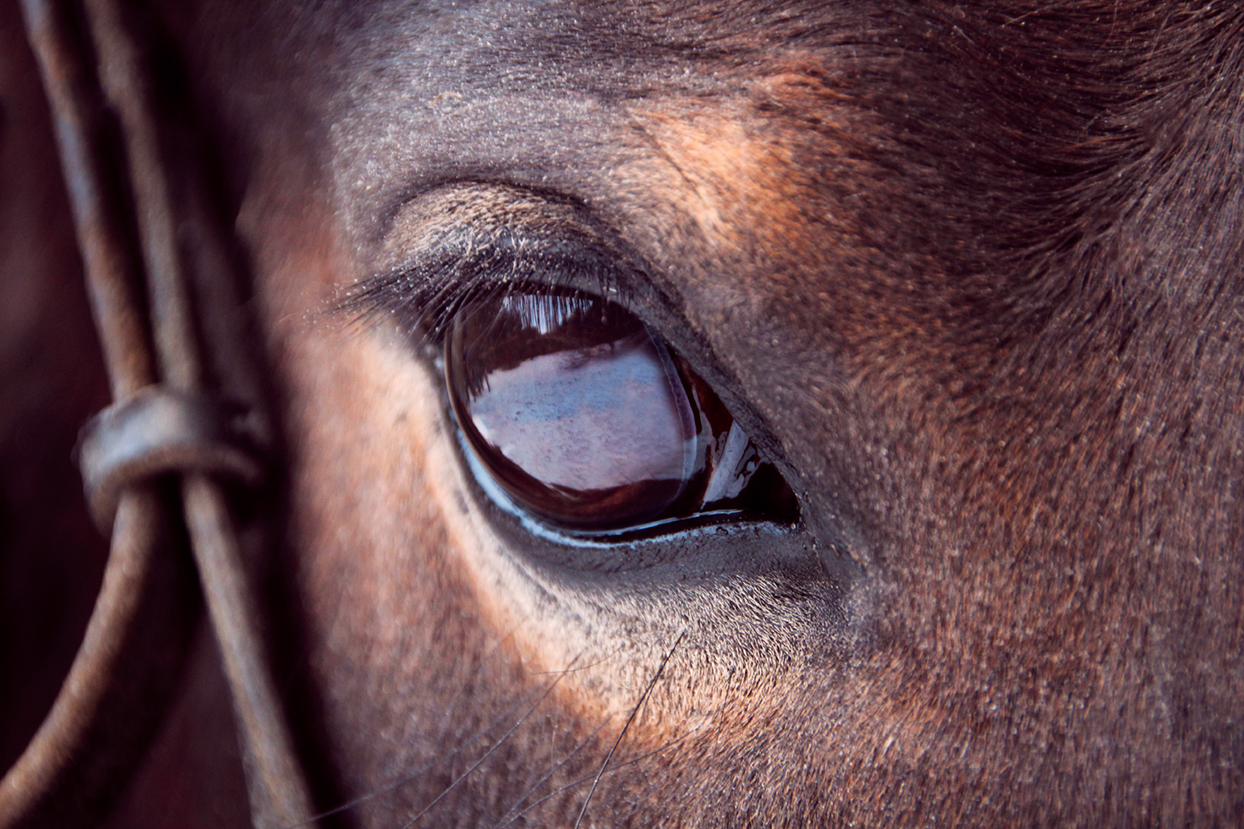
Once completed, the results are processed and illustrated on your profile, and you can compare your horse’s behaviour to each other’s horses and the horses of the E-BARQ population from around the world. The results are illustrated as scores out of four for categories that included rideability, trainability, independence, boldness and confidence, amongst others. Users can re-take the questionnaire repeatedly for each horse, thus collecting longitudinal data that can assist with evaluating how their horse’s training and management over time is reflected in their behaviour. The goal is to positively impact horse welfare in the long run.
DID YOU KNOW?
According to the research, there is a correlation between the number of riders/handlers and the horse’s response to acceleration and deceleration queues; the more riders, the less responsive horses are to both! (*4)
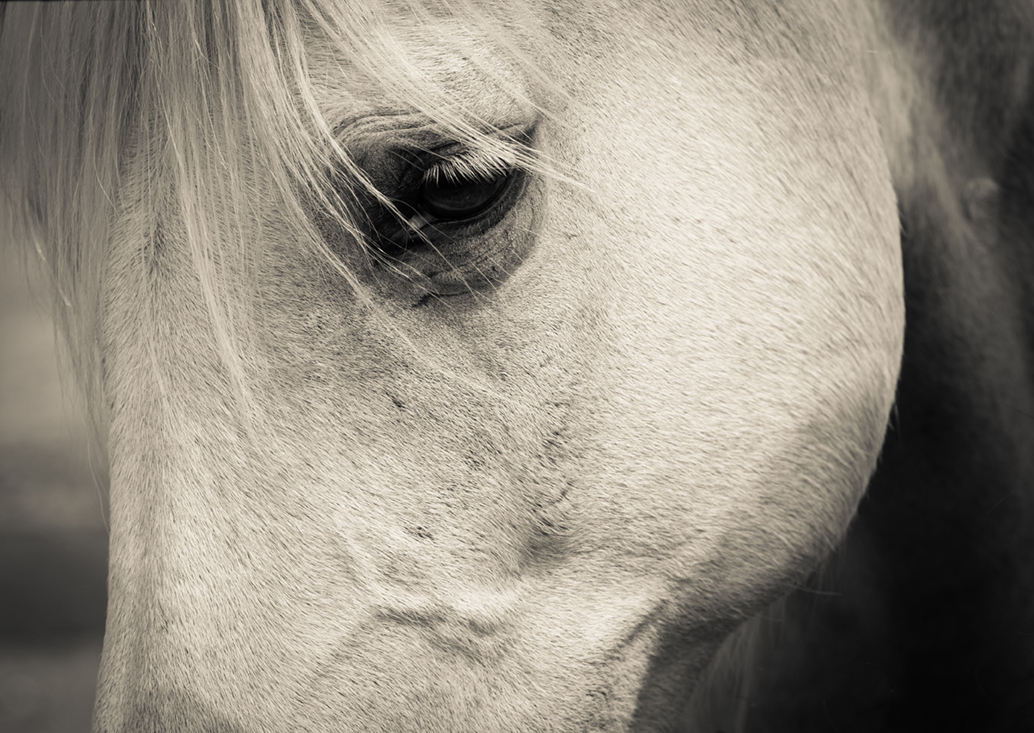
We highly recommend that you complete the questionnaire! You may notice some interesting questions and learn something new about your horse. If you complete it for your horse, we would love to hear if you learn anything or if you would like us to discuss any topics in more detail in the magazine.
Stay tuned for our next welfare article, which will be in our February edition.
DID YOU KNOW?
According to the research, there is a correlation between the number of riders/handlers and the horse’s response to acceleration and deceleration queues; the more riders, the less responsive horses are to both! (*4)
References
*1. Benedetti, B., Felici, M., Nanni Costa, L., & Padalino, B. (2023). A review of horse welfare literature from 1980 to 2023 with a text mining and topic analysis approach. Italian Journal of Animal Science, 22(1), 1095–1109. https://doi.org/10.1080/1828051X.2023.2271038
*2. Fenner K, Matlock S, Williams J, Wilson B, McLean A, Serpell J, McGreevy P. Validation of the Equine Behaviour Assessment and Research Questionnaire (E-BARQ): A New Survey Instrument for Exploring and Monitoring the Domestic Equine Triad. Animals (Basel). 2020 Oct 28;10(11):1982. doi: 10.3390/ani10111982. PMID: 33126670; PMCID: PMC7692587.
*3. Anzulewicz, A., Fenner, K., Hyde, M., Heald, S., Burattini, B., Romness, N., McKenzie, J., Wilson, B., & McGreevy, P. (2021). The Impact of the Sex of Handlers and Riders on the Reported Social Confidence, Compliance and Touch Sensitivity of Horses in Their Care. Animals, 11(1), 130. https://doi.org/10.3390/ani11010130
*4. McKenzie, J., Fenner, K., Hyde, M., Anzulewicz, A., Burattini, B., Romness, N., Wilson, B., & McGreevy, P. (2021). Equine Responses to Acceleration and Deceleration Cues May Reflect Their Exposure to Multiple Riders. Animals, 11(1), 66. https://doi.org/10.3390/ani11010066
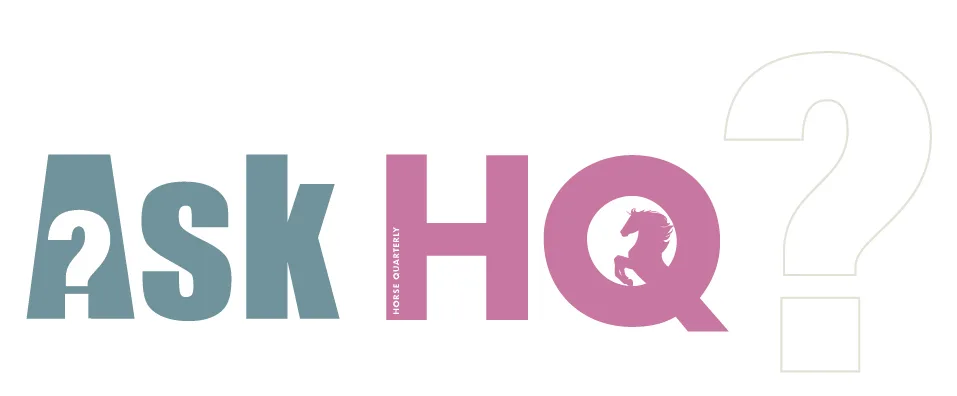



Smutsfinger grass (Digitaria eriantha), also known as digit grass, is a warm-season perennial grass native to southern Africa. It is commonly grown as pasture or hay and is valued for its drought resistance, palatability, and high forage production. It’s particularly suited for horses in regions with warm climates, including South Africa, where it is widely cultivated.
CHARACTERISTICS OF SMUTSFINGER GRASS
1. Adaptability:
• Thrives in sandy and well-drained soils.
• Highly drought-tolerant and can grow in areas with low to moderate rainfall.
• Provides good ground cover, reducing soil erosion.
2. Palatability:
• Horses generally find smutsfinger grass palatable, especially when harvested at the right growth stage.
3. Suitability:
• Ideal for grazing and hay production.
• Low oxalate content compared to other tropical grasses, making it safer for horses in terms of calcium absorption and avoiding conditions like nutritional secondary hyperparathyroidism (‘big head’ disease).

POTENTIAL CONSIDERATIONS FOR FEEDING SMUTSFINGER
• Quality decline with maturity: Nutritional quality decreases if smutsfinger grass is allowed to mature too much before harvest, with reduced protein and energy content and increased fibre levels.
• Supplementation: While suitable for maintenance, performance horses, lactating mares, and growing foals may require additional protein or energy supplementation.
• Soil management: Proper soil fertilisation and management practices are necessary to ensure good nutrient levels, but this is true for all forage.
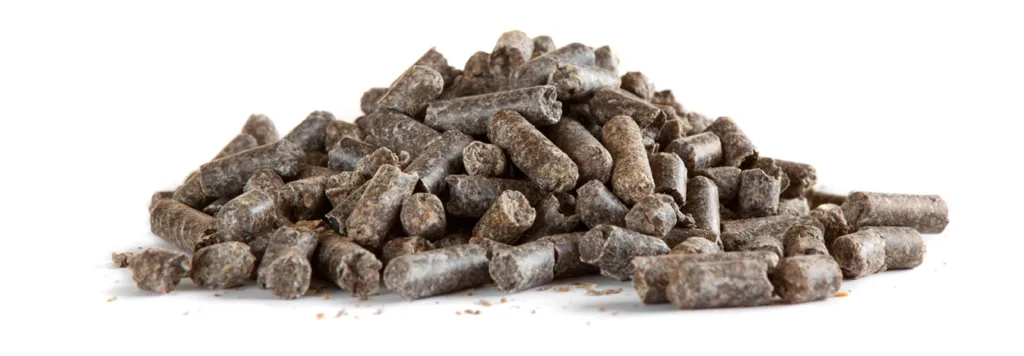


Concerns about the iron level in horse feeds stem from the potential adverse effects of excessive iron on horse health. Here are the main reasons why people are worried:
1. Iron overload
Horses require only a small amount of iron for healthy blood production, oxygen transport, and cellular functions. Excessive iron intake, however, can in rare cases lead to iron overload, which has been associated with:
• Liver damage: Excess iron can accumulate in the liver, leading to oxidative stress and liver dysfunction.
• Insulin resistance: High iron levels have been linked to an increased risk of insulin dysregulation, which may contribute to conditions like equine metabolic syndrome (EMS) and laminitis.
2. Iron in forage and water
Many horses already receive enough (or even excessive) iron from natural sources such as forage and water. This makes additional iron in commercial feeds or supplements unnecessary and potentially harmful.
3. Imbalance of minerals
Excess iron can interfere with the absorption of other essential minerals, particularly copper and zinc, which are crucial for healthy hooves, skin, coat, and immune function. This imbalance can cause:
• Poor coat quality
• Weakened hoof structure
• Increased susceptibility to infections
4. Iron in feeds is sometimes unlabelled
Many horse owners are unaware of the iron content in feeds because manufacturers are not always required to list it on the label. This lack of transparency makes it challenging to calculate the total iron intake and avoid over-supplementation.
5. Link to chronic conditions
Some studies suggest a possible connection between chronic excessive iron intake and inflammatory conditions in horses, although more research is needed.
WHAT CAN YOU DO TO MANAGE IRON LEVELS
In an ideal world, testing each batch of forage and your water levels of iron would be very helpful. However, in reality this isn't easy to do in South Africa. Instead, make sure to read feed labels carefully and opt for feeds with balanced mineral profiles. If in doubt, consult an equine nutritionist to help assess the balance of your horse’s diet.
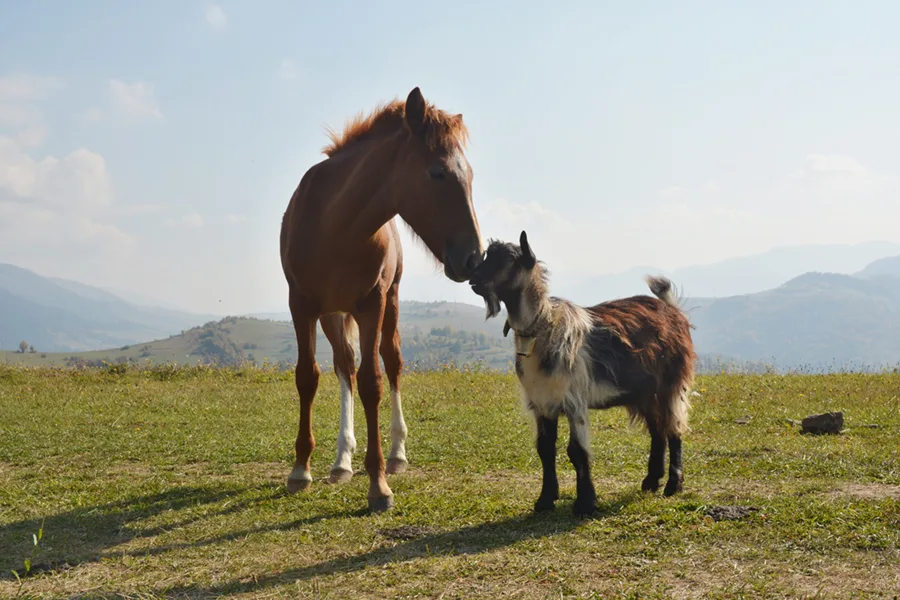


The best companion animal for a horse depends on the horse's personality, living situation, and your preferences as the owner.
Horses are natural herd animals and need companionship to feel secure and less stressed.
The best option as a companion for most horses is another horse. Horses naturally bond with other horses and meet each other’s social needs optimally. However, if a horse is not a possibility in your current scenario, or you are looking for a companion for specific situations with your horse, a goat is a suitable choice.
The benefits of choosing a goat include that they are generally easy to care for, don’t require vast amounts of space and are relatively inexpensive to feed. They have also been known to help calm nervous horses, particularly at shows. However, it is worth remembering that goats are excellent escape artists. They will need goat-proof housing and fencing to be kept safe.
In summary, most horses need the company of other horses, but a goat is a suitable option as an interim measure, stable buddy, or show companion, provided your horse enjoys the companionship.


Get all latest content delivered to your email a few times a month.